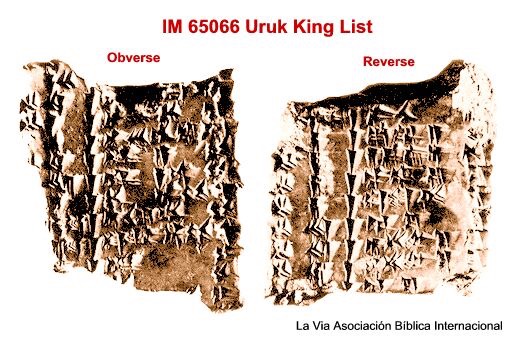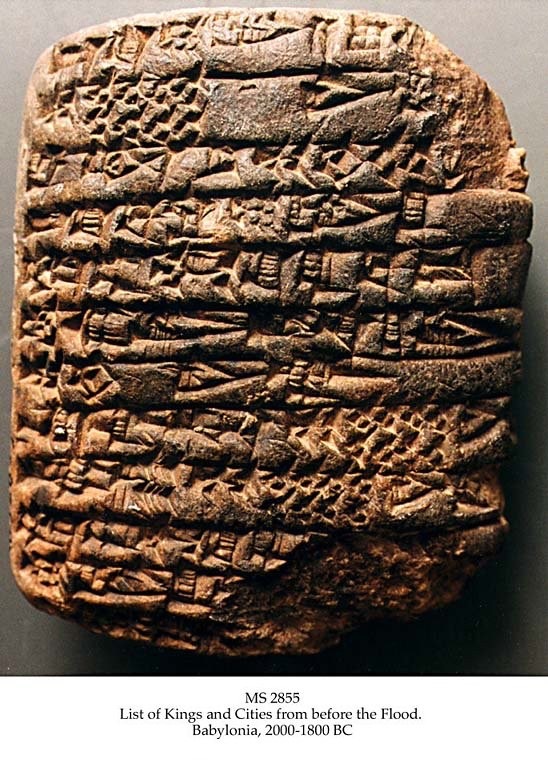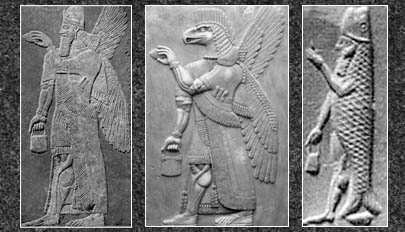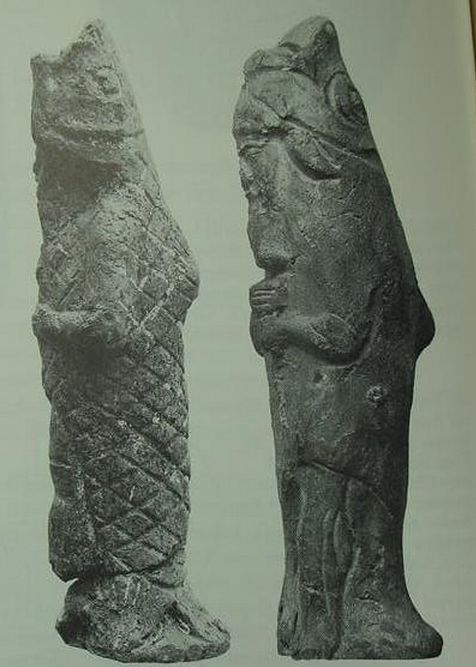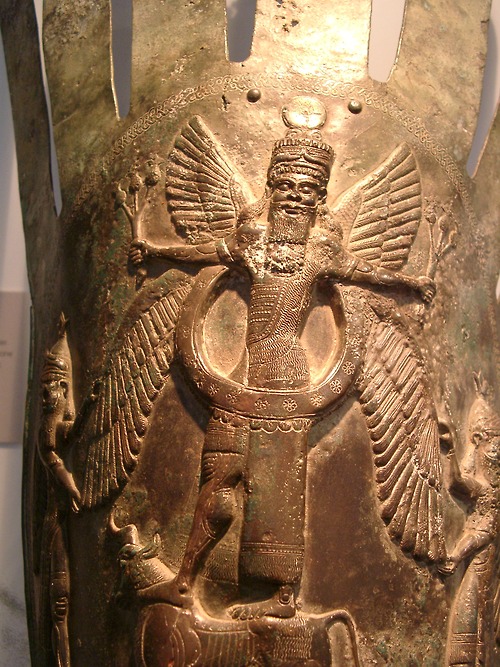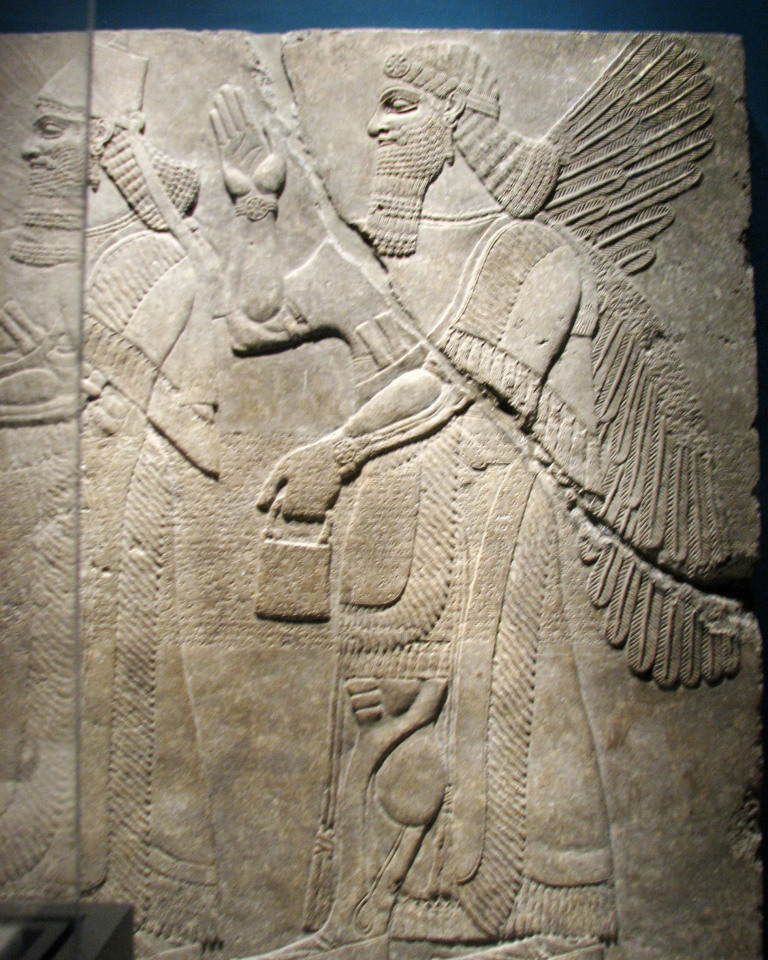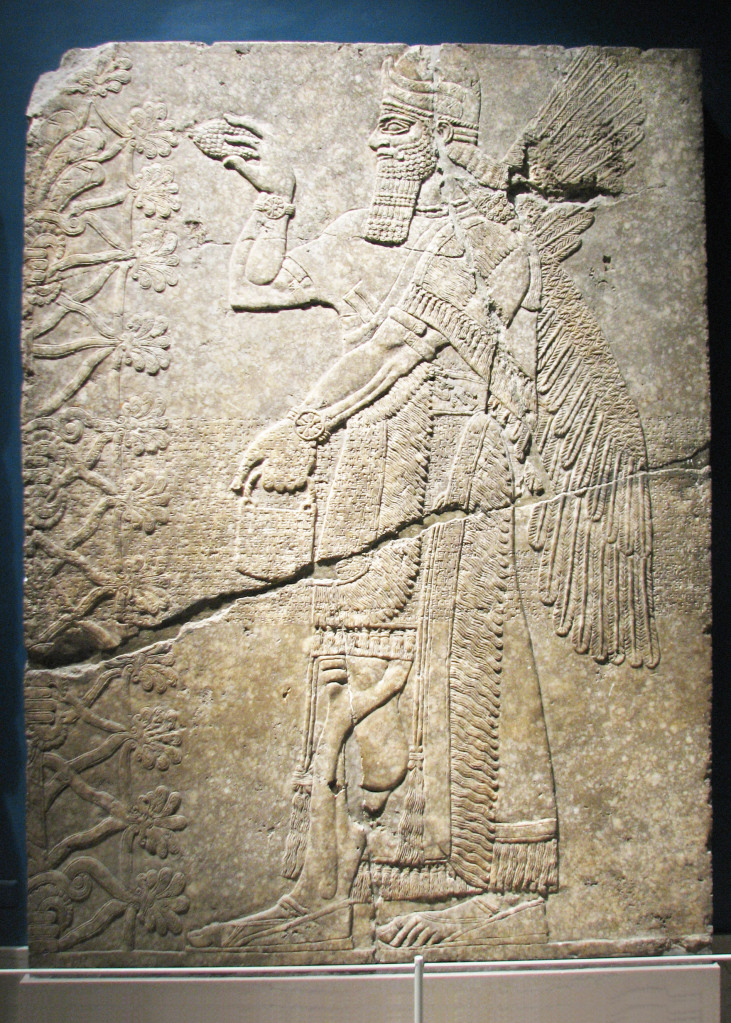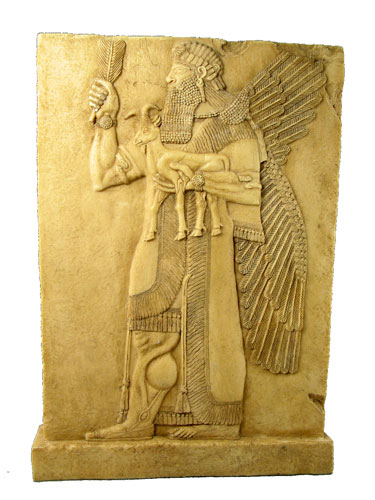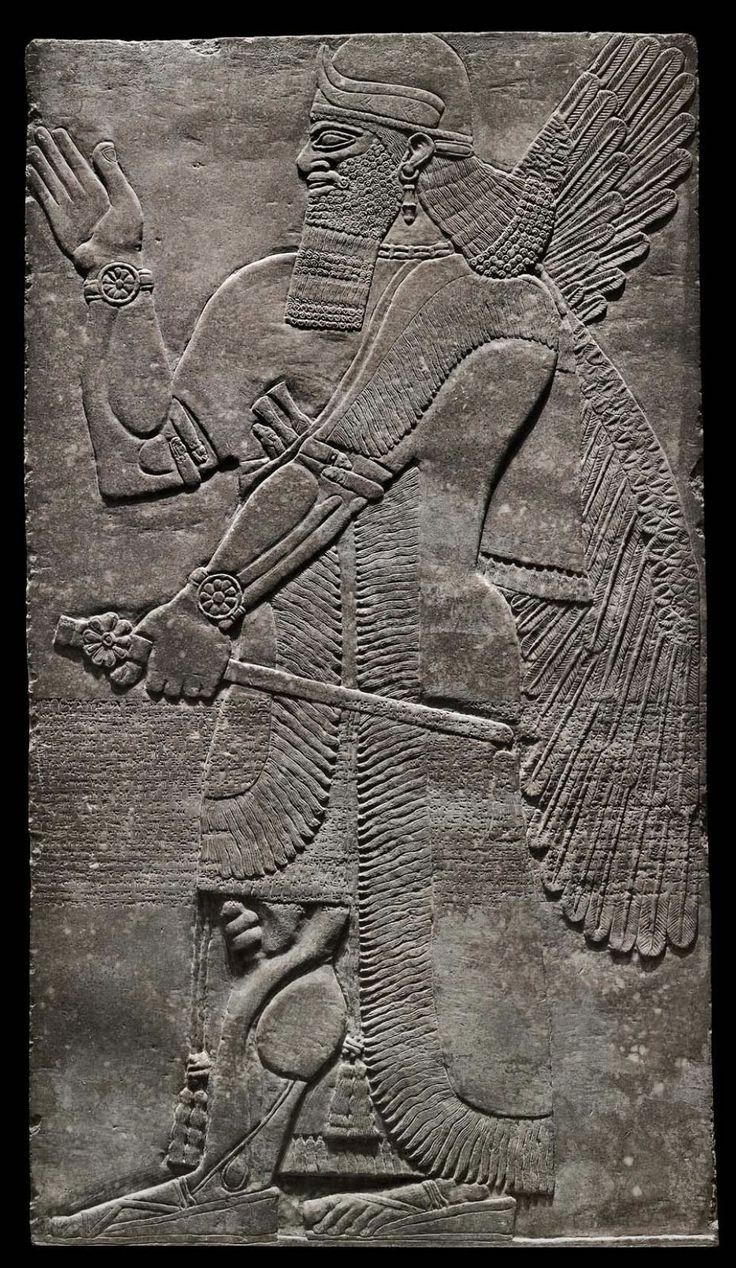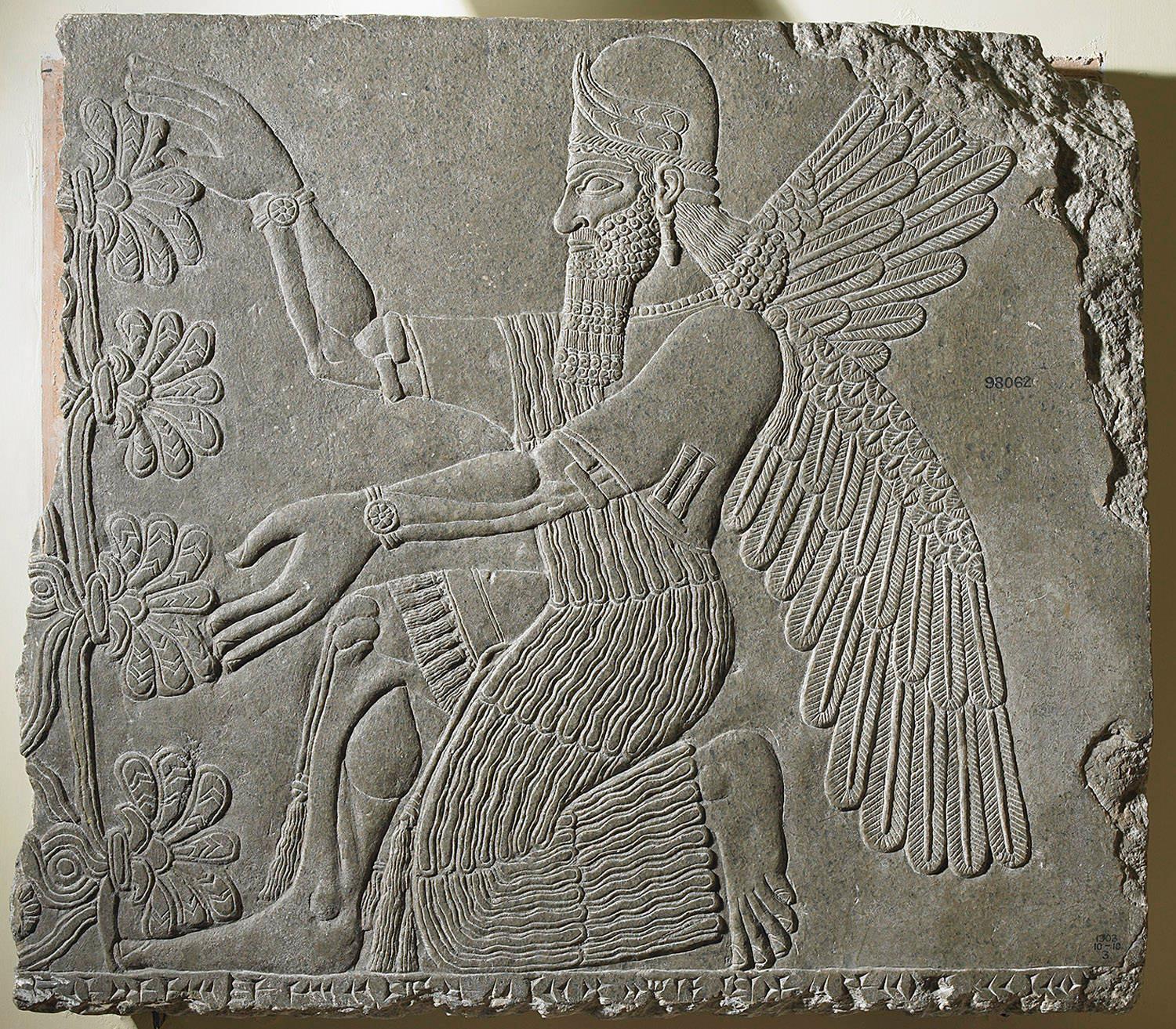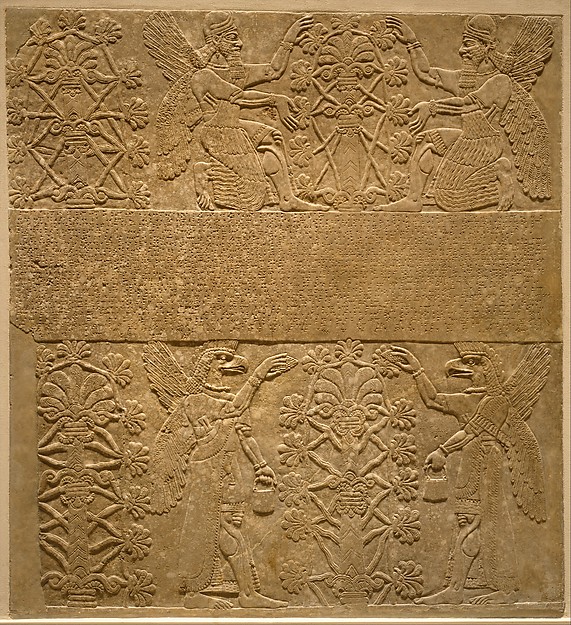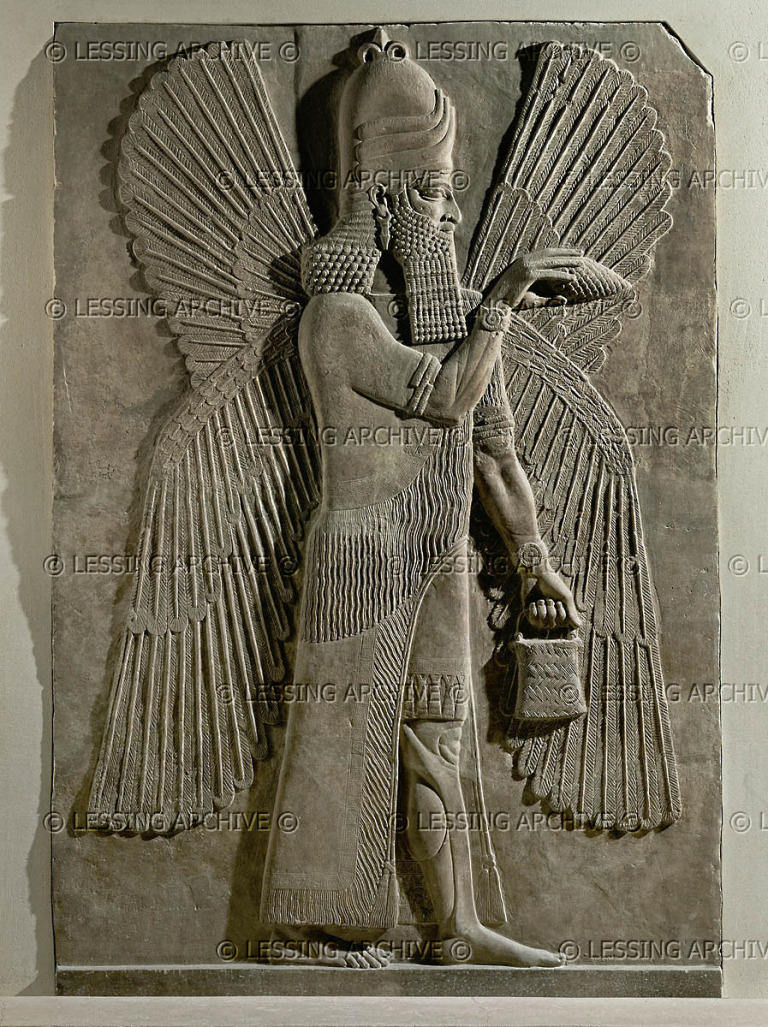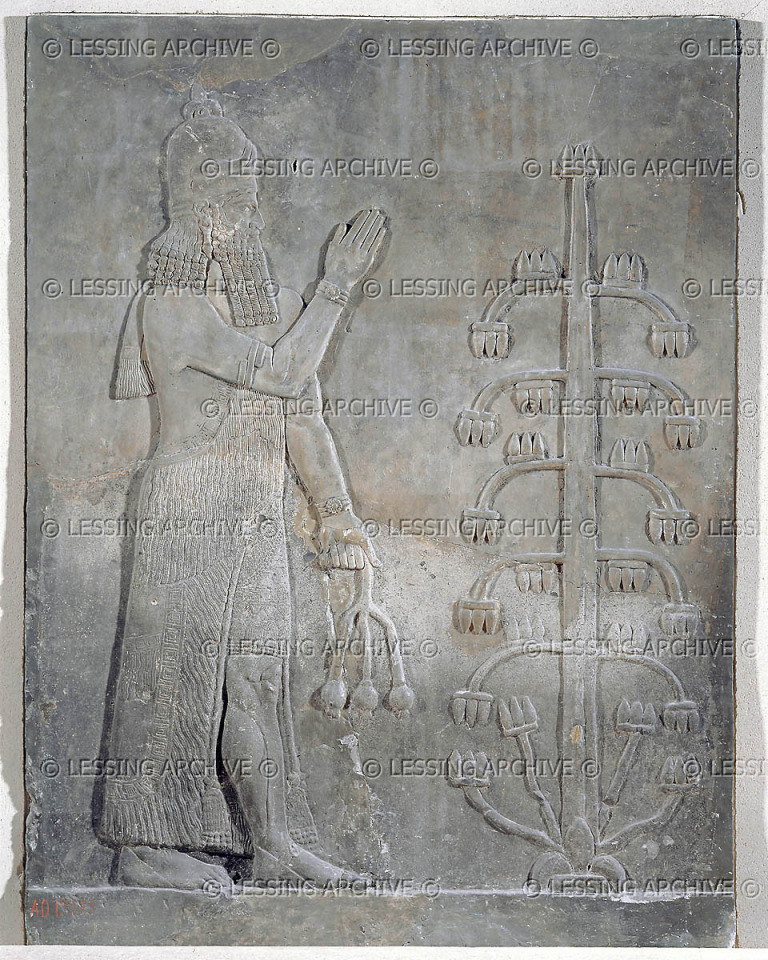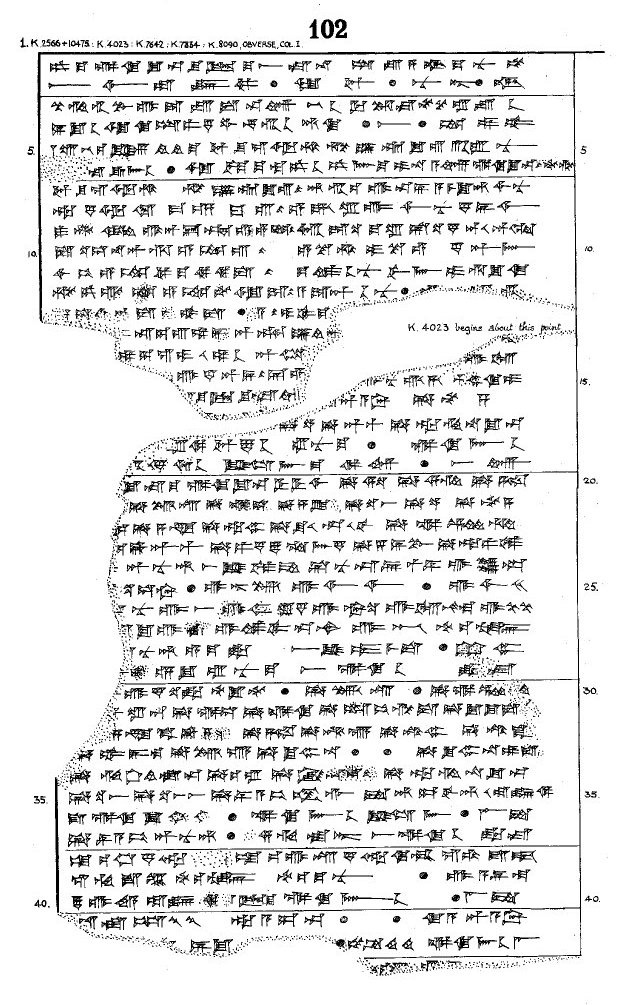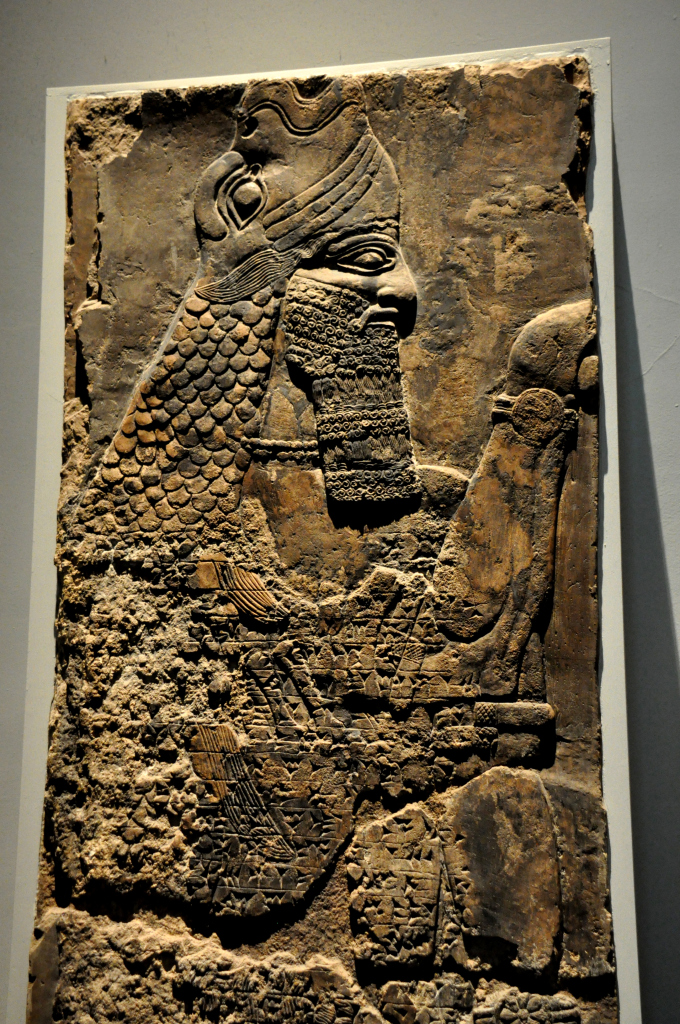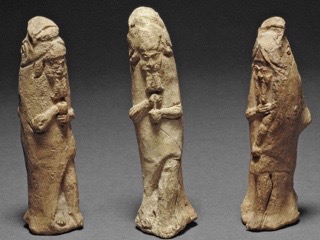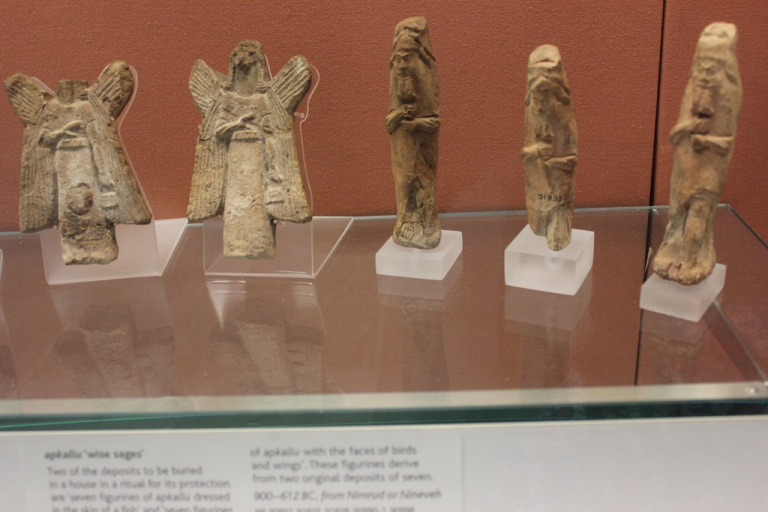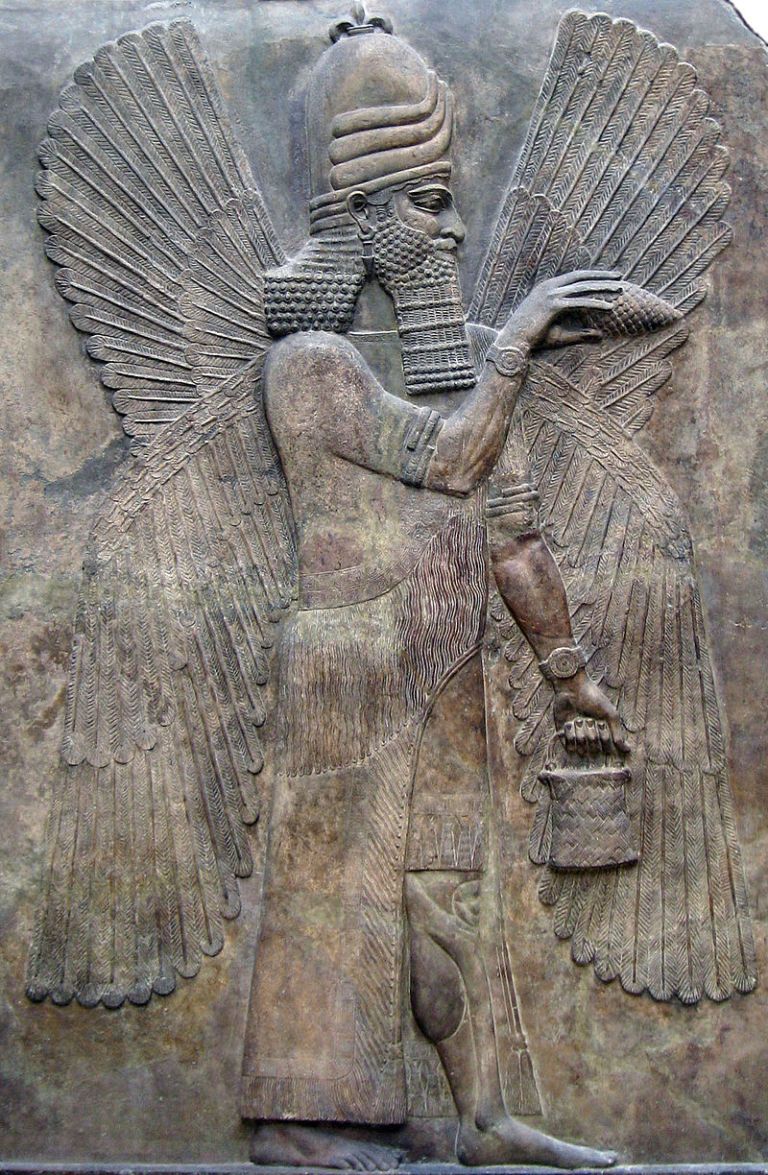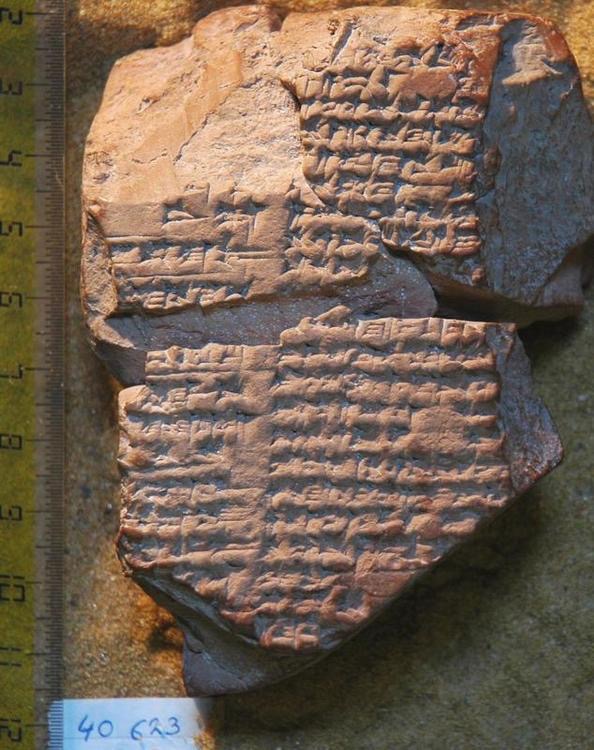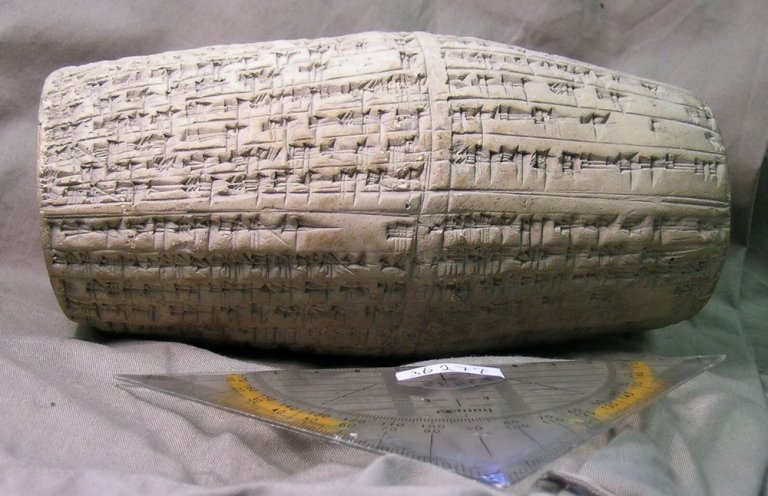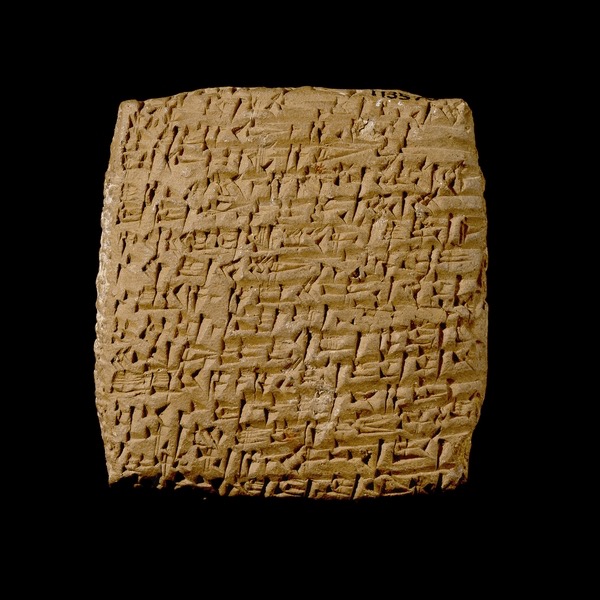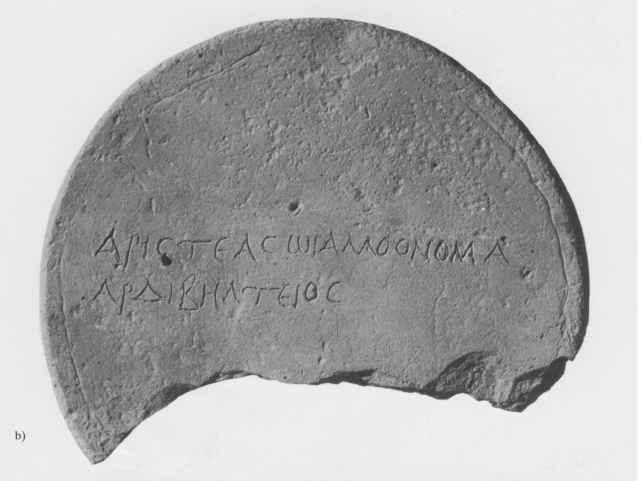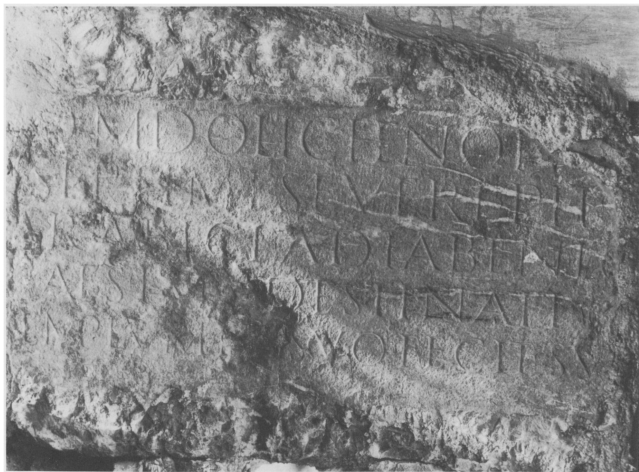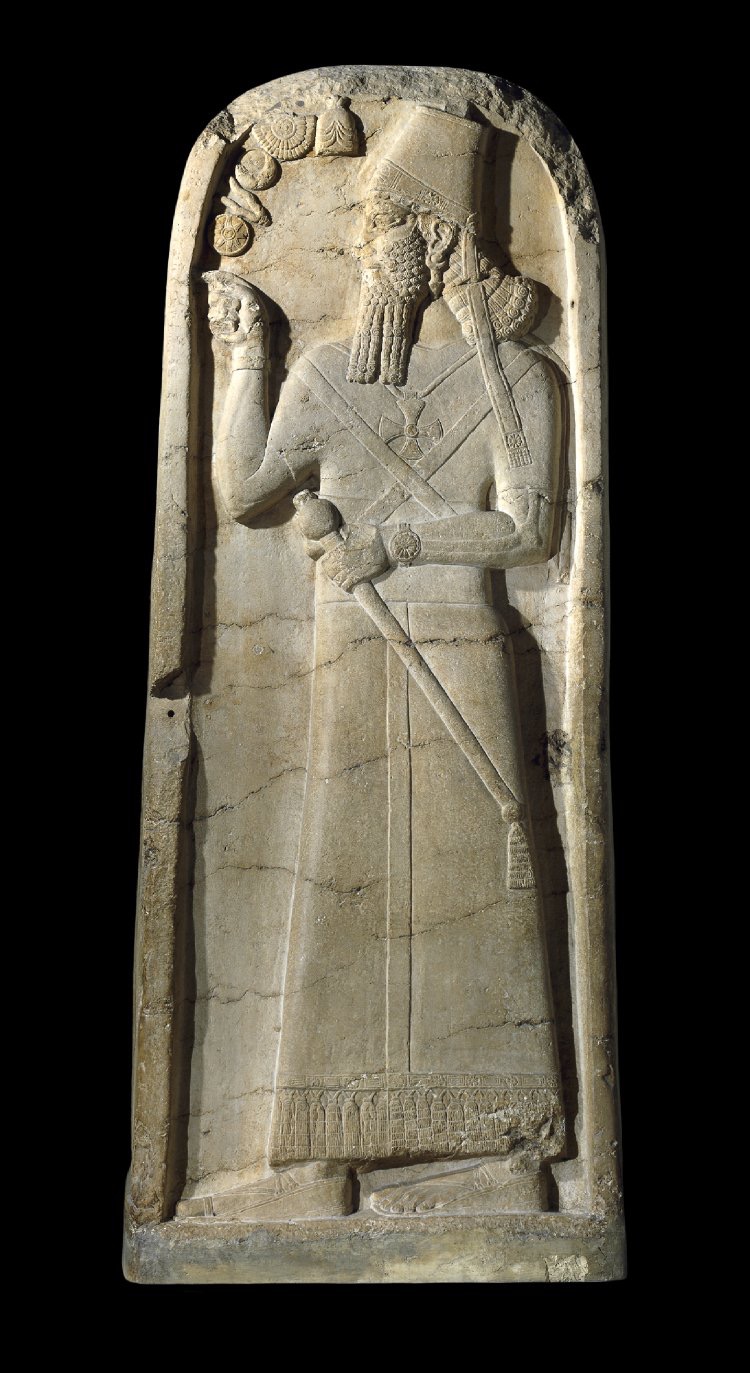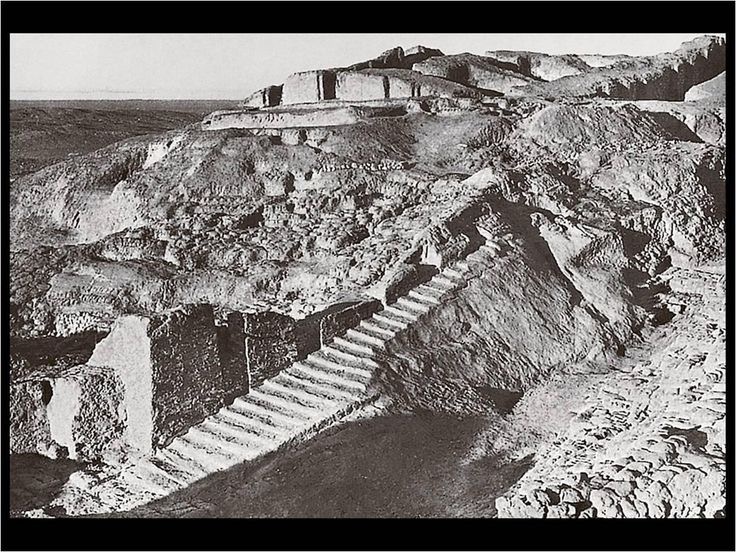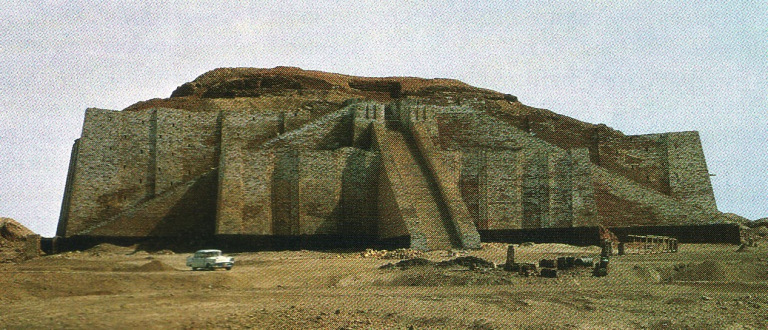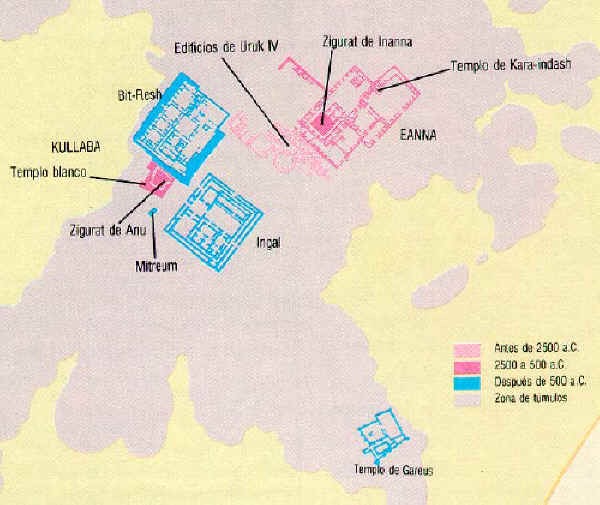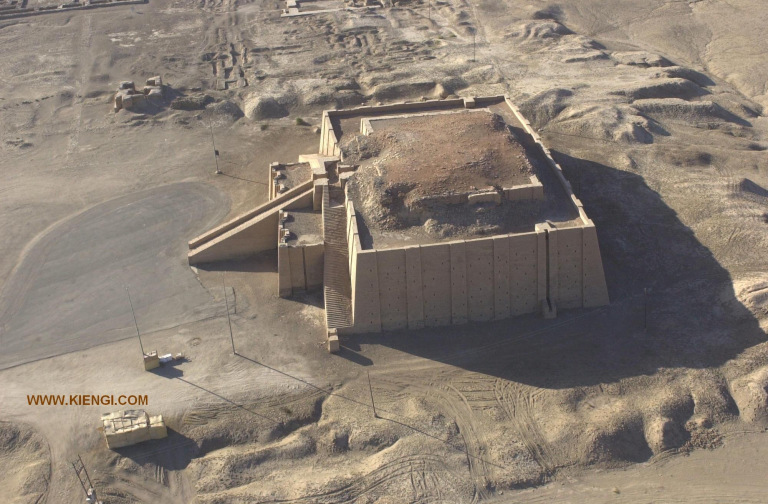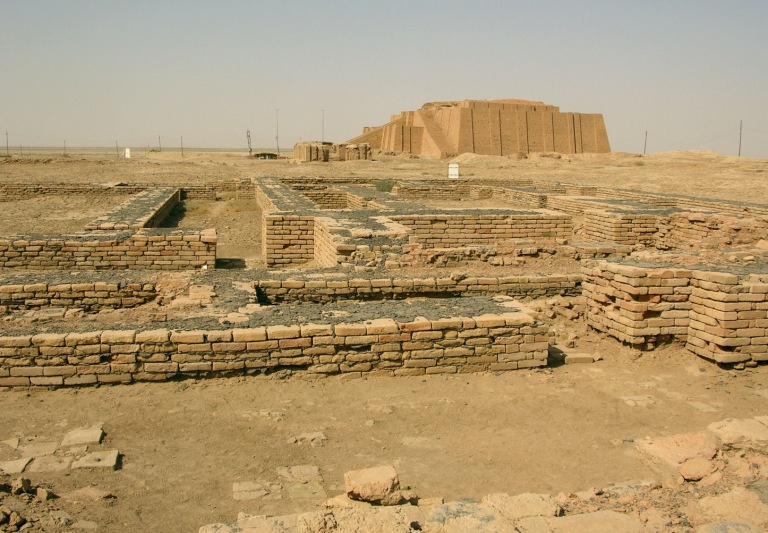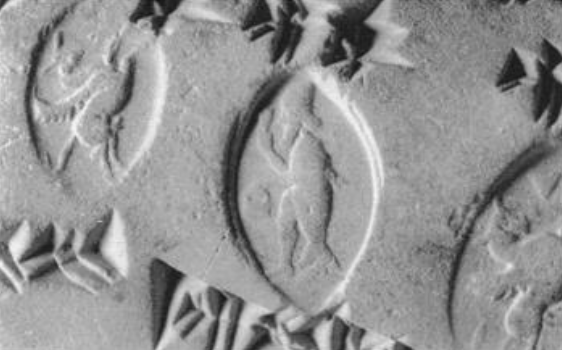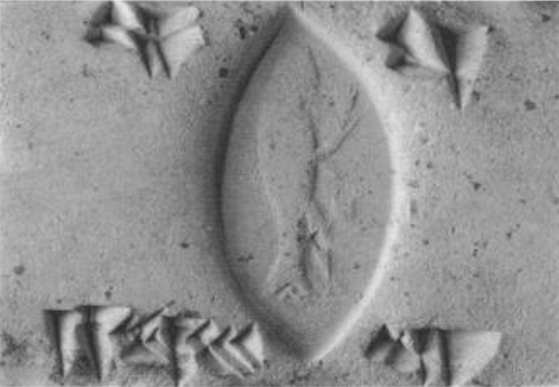
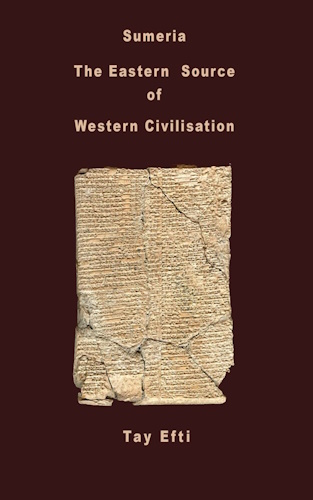

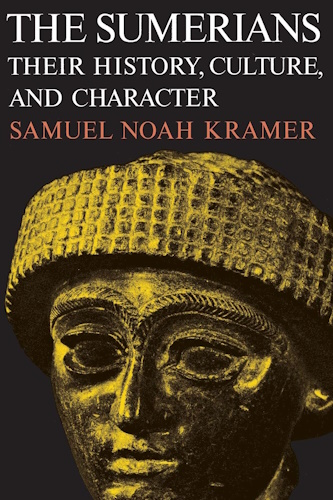

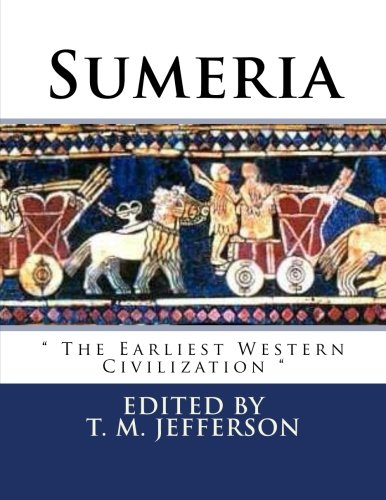



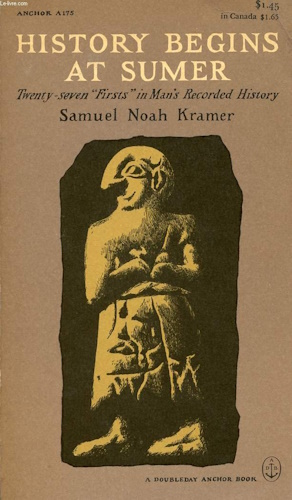

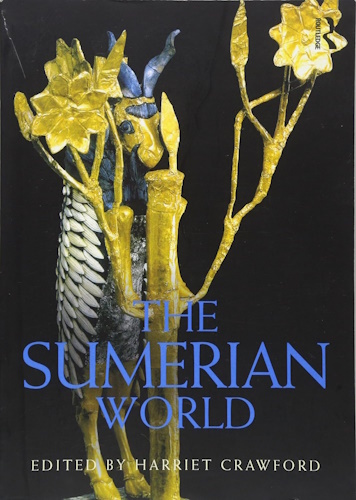



The Uruk List
of
Kings and Sages
and
Late Mesopotamian Scholarship
by Alan Lenzi
University of the Pacific, Religious and Classical Studies, Faculty Member
collated by Esteban
at SAMIZDAT
Lenzi: The Uruk List of Kings and Sages
THE URUK LIST OF KINGS AND SAGES AND LATE MESOPOTAMIAN SCHOLARSHIP
ALAN LENZI
University of the Pacific
Abstract
“The Uruk List of Kings and Sages is best known for its genealogy connecting human scholars to antediluvian sages. Since its publication in 1962, however, questions pertaining to the text’s specific purpose within the context of Hellenistic Uruk have been neglected.
This study seeks to understand two such questions: why is the most explicit scholarly genealogy written in the Hellenistic period?; and who is the last named person in the text?
Seeking answers to these questions sheds new light on the text’s purpose: it is an attempt by scholars to gain support for themselves and their novel cultic agenda.
Keywords: Hellenistic Uruk, Mesopotamian scholars, Nicharkos, Antiquarianism, Anu cult
The cuneiform tablet (IM 65066) is in the Bagdad Museum.
A.K. Grayson, from the Reallexikon der Assyriologie, s.v. “Königslisten und Chroniken”.A.K. Grayson, ‘Assyrian and Babylonian King Lists,’ in: Lišan mithurti. (Festschrift Von Soden) (Kevelaer : Neukirchen-Vluyn : Butzon & Bercker; 1969) Plate III.
http://www.livius.org/source-content/uruk-king-list/
The “Uruk List of Kings and Sages” (ULKS) was discovered in Anu’s Bīt Rēš temple by German archaeologists during the 1959/60 season and published in 1962 by van Dijk. (The tablet bears the excavation number W.20030, 7. For an edition of the text, see Jan van Dijk, “Die Inschriftenfunde,” Vorläufiger Bericht über die . . . Ausgrabungen in Uruk-Warka 18 (1962), 44-52 and plate 27).
Since then Assyriologists have cited this Seleucid-era text as the clearest cuneiform evidence that Mesopotamian scholars (ummânū) traced their professional ancestry explicitly back to the mythological sages (apkallū) of antediluvian fame and thereby implicitly to a relationship with the god Ea.
Setting this evidence alongside earlier historical data, it becomes clear that this scholarly genealogy was already functioning in the Neo-Assyrian period but probably even earlier in the late second millennium. (See, e.g., Helge S. Kvanvig, Roots of Apocalyptic: The Mesopotamian Background of the Enoch Figure and of the Son of Man, Wissenschaftliche Monographien zum Alten und Neuen Testament 61 (Neukirchen-Vluyn: Neukirchener Verlag, 1988), 202, etc.)
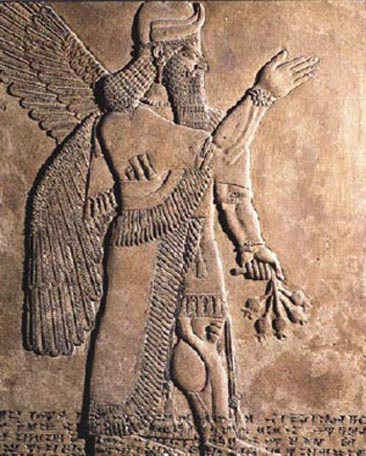
An ummânu, or sage of human descent. The
ummânu raises his right hand in the iconic
gesture of greeting, with uncertain plants
in his left hand. Note the rosette design
on his wristband, and the horned tiara
headdress, indicative of divinity. Such human
apkallū are invariably portrayed with wings.
Despite its historical importance, this genealogical aspect of our text has over-shadowed other basic questions about the Seleucid historical context in which it arose. Two such questions provide the impetus for this study:
1. Despite the well-known importance of scholars in the earlier Neo-Assyrian period and the abundance of materials relating to their activities, why does one find the most explicit and systematic connection between the ummânū and apkallū in the Seleucid period?
2. How does the last named and oft-overlooked individual fit into this text’s plan and into the social context of Hellenistic Uruk? (Van Dijk recognized right away that this last person is of utmost significance for the interpretation of the text and offered tentative ideas about his identity and purpose (see “Die Inschriftenfunde,” 45-46, 50, 52). I know of no other explicit treatment of this particular issue since van Dijk’s. This study attempts to build on his suggestions.)
In order to formulate a plausible answer to these questions I raise three issues very briefly that provide context. First, I review some of the earlier first millennium evidence for the genealogical connection between the ummânū and apkallū; second, I survey the Seleucid dynasty’s relationship to indigenous institutions in Mesopotamia, especially with regard to temples; and finally, I consider aspects of the archaizing theological tendencies of Urukean scribes in the late Persian and Hellenistic periods.
In light of this contextualization, I interpret the ULKS as a tendentious document written by scholars who needed to reassert their importance to the community leadership in order to advance their cultic-political agenda. Unfortunately, due to the circumstantial and at times fragmentary evidence, this interpretation can only be offered as a plausible reading and must therefore remain tentative.”
Alan Lenzi, The Uruk List of Kings and Sages and Late Mesopotamian Scholarship, JANER 8.2, Brill, Leiden, 2008. pp. 137-40.
Lenzi: The Mythology of Scribal Succession
"The text of the ULKS is as follows:
"During the reign of Ayalu, the king, Adapa was sage.
During the reign of Alalgar, the king, Uanduga was sage.
During the reign of Ameluana, the king, Enmeduga was sage.
During the reign of Amegalana, the king, Enmegalama was sage.
During the reign of Enmeušumgalana, the king, Enmebuluga was sage.
During the reign of Dumuzi, the shepherd, the king, Anenlilda was sage.
During the reign of Enmeduranki, the king, Utuabzu was sage.
After the flood,(?) during the reign of Enmerkar, the king, Nungalpirigal was sage, whom Ištar brought down from heaven to Eana. He made the bronze lyre, whose . . . (were) lapis lazuli, according to the technique of Ninagal (Ninagal is Ea's smith). The lyre was placed before Anu . . ., the dwelling of (his) personal god.?
During the reign of Gilgamesh, the king,? Sin-leqi-unnini was scholar.
During the reign of Ibbi-Sin, the king, Kabti-ili-Marduk was scholar.
During the reign of Išbi-Erra, the king, Sidu, a.k.a. Enlil-ibni, was scholar.
During the reign of Abi-ešuh, the king, Gimil-Gula and Taqiš-Gula were the scholars.
During the reign of . . ., the king, Esagil-kin-apli was scholar.
During the reign of Adad-apla-iddina, the king, Esagil-kin-ubba (this name … despite chronological problems, is probably to be identified with Saggil-kina-ubbib, the author of The Babylonian Theodicy; see van Dijk, "Die Inschriftenfunde," 51) was scholar.
During the reign of Nebuchadnezzar, the king, Esagil-kin-ubba was scholar.
During the reign of Esarhaddon, the king, Aba-Enlil-dari was scholar, whom the Arameans call Ahiqar.
. . . Nikarchos.
Tablet of Anu-belšunu, son of Nidintu-Anu, descendant of Sin-leqi-unnini, the lamentation-priest of Anu and Antu. An Urukean. (Copied) by his own hand. Uruk, 10 Ayyar, 147th year of Antiochus, the king.
The one who reveres Anu will not carry it off."
Gaining a historical perspective on the scholarly genealogical tradition attested in the text of ULKS is the first element of contextualizing our text. Clearly, the ULKS is unique.
MS 2855
Text:
“IN ERIDU: ALULIM RULED AS KING 28,800 YEARS. ELALGAR RULED 43,200 YEARS. ERIDU WAS ABANDONED. KINGSHIP WAS TAKEN TO BAD-TIBIRA. AMMILU’ANNA THE KING RULED 36,000 YEARS. ENMEGALANNA RULED 28,800 YEARS. DUMUZI RULED 28,800 YEARS. BAD-TIBIRA WAS ABANDONED. KINGSHIP WAS TAKEN TO LARAK. EN-SIPA-ZI-ANNA RULED 13,800 YEARS. LARAK WAS ABANDONED. KINGSHIP WAS TAKEN TO SIPPAR. MEDURANKI RULED 7,200 YEARS. SIPPAR WAS ABANDONED. KINGSHIP WAS TAKEN TO SHURUPPAK. UBUR-TUTU RULED 36,000 YEARS. TOTAL: 8 KINGS, THEIR YEARS: 222,600”
MS in Sumerian on clay, probably Larsa Babylonia, 2000-1800 BC, 1 tablet, 8,1×6,5×2,7 cm, single column, 26 lines in cuneiform script.
5 other copies of the Antediluvian king list are known only: MS 3175, 2 in Oxford: Ashmolean Museum, one is similar to this list, containing 10 kings and 6 cities, the other is a big clay cylinder of the Sumerian King List, on which the kings before the flood form the first section, and has the same 8 kings in the same 5 cities as the present.
A 4th copy is in Berkeley: Museum of the University of California, and is a school tablet. A 5th tablet, a small fragment, is in Istanbul.
The list provides the beginnings of Sumerian and the world’s history as the Sumerians knew it. The cities listed were all very old sites, and the names of the kings are names of old types within Sumerian name-giving. Thus it is possible that correct traditions are contained, though the sequence given need not be correct. The city dynasties may have overlapped.
It is generally held that the Antediluvian king list is reflected in Genesis 5, which lists the 10 patriarchs from Adam to Noah, all living from 365 years (Enoch) to 969 years (Methuselah), altogether 8,575 years.
It is possible that the 222,600 years of the king list reflects a more realistic understanding of the huge span of time from Creation to the Flood, and the lengths of the dynasties involved.
The first of the 5 cities mentioned , Eridu, is Uruk, in the area where the myths place the Garden of Eden, while the last city, Shuruppak, is the city of Ziusudra, the Sumerian Noah.
Jöran Friberg: A remarkable Collection of Babylonian Mathematical Texts. Springer 2007.
Sources and Studies in the History of Mathematics and Physical Sciences.
Manuscripts in the Schøyen Collection, vol. 6, Cuneiform Texts I. pp. 237-241. Andrew George, ed.: Cuneiform Royal Inscriptions and Related Texts in the Schøyen Collection, Cornell University Studies in Assyriology and Sumerology, vol. 17,
Manuscripts in the Schøyen Collection, Cuneiform texts VI. CDL Press, Bethesda, MD, 2011, text 96, pp. 199-200, pls. LXXVIII-LXXIX.
Andrew E. Hill & John H. Walton: A survey of the Old Testament, 3rd ed., Grand Rapids, Mi., Zondervan Publ. House, 2009, p. 206.
Zondervan Illustrated Bible, Backgrounds, Commentary. John H. Walton, gen. ed. Grand Rapids, Mich., Zondervan, 2009, vol 1, p. 482, vol. 5, p. 398.
Babylonia
2000 – 1800 BC
It lists seven well-known antediluvian kings, each paired with his corresponding apkallū-sage, then a single post-diluvian king-apkallū pair, followed by eight post-diluvian kings, each with his corresponding ummânu-scholar (in one case, two scholars).
The list is arranged from start to finish in what one must recognize as an attempt at chronological order. Focusing on the ummânū, the implication of the text is rather clear: the human, post-diluvian scholars are the direct professional descendants of the earlier semi-divine apkallū.
In a previous study I called this traditional genealogical relationship the "mythology of scribal succession."
Alan Lenzi, The Uruk List of Kings and Sages and Late Mesopotamian Scholarship, JANER 8.2, Brill, Leiden, 2008. pp. 140-3.
Lenzi: On the apkallū–ummânū Association
"There are of course quite early precedents for king lists, antediluvian or otherwise; there are also several earlier examples of kings being listed with their chief scholarly advisor (see the overview in A. Kirk Greyson, "Königslisten und Chroniken," Reallexikon der Assyriologie 6 (1980) 86-135).
But there is nothing that traces the royal scholars back through antediluvian times to the apkallū as clearly as does the ULKS. We need not require the evidence for the earlier viability of this tradition, however, to conform to this explicit and systematic presentation of the "mythology of scribal succession."
The three types of apkallū are portrayed, with the human ummânū at far left, the Nisroch bird-apkallū type in the middle, and the antediluvian purādu-fish type at far right.
The human ummânū is attested in the Uruk List of Kings and Sages, while other references to bird-apkallū are legion, as documented in Wiggermann and other authorities.
The purādu-fish apkallū is principally attested in Berossus, though other authorities confirm them, as well.
The anthropomorphic qualities of the purādu-fish and the Nisroch apkallū remain unexplained, though the eagle is sacred to Enki / Ea.
Our list's formulation of the genealogical tradition should not be made the measure of its earlier existence. As others have done, we shall use one of the most basic features of the ULKS as our guide into earlier material: the close association between mythical apkallūand their human counterparts.
Finding this concept as well as hints of succession between the two groups in earlier cuneiform material gives us good reason to believe the "mythology of scribal succession" existed at an earlier time.
(The novel contribution here is to highlight two new evidential ideas, in Bīt mēseri and in "Advice to a Prince," and to respond to an important objection raised by Seth Sanders, "Writing, Ritual, and Apocalypse: Studies in the Theme of Ascent to Heaven in Ancient Mesopotamia and Second Temple Judaism" (Ph.D. Dissertation, The Johns Hopkins University, 1999), 125, 144-45.
Many scholars treating the subject of scholarly genealogy often appeal to the Enmeduranki text (e.g., Beaulieu, "The Social and Intellectual Setting of Babylonian Wisdom Literature," 15 and Rochberg, Heavenly Writing, 183-184; see W. G. Lambert, "The Qualifications of Babylonian Diviners," in Festschrift für Rykle Borger zu seinem65. Geburtstag am 24. Mai 1994: Tikip santakki mala bašmu . . ., ed. Stefan M. Maul; Cuneiform Monographs 10 [Groningen: Styx, 1998], 141-58 for an edition of this text).
Purādu-fish apkallū were antediluvian sages, the famous Seven Sages of Sumeria were purādu-fish.
The genotype is also attested in Berossus, as the form of the mentor of mankind, Oannes.
Although that tradition is clearly related to the issue of antediluvian knowledge and its transmission to scholars, its formulation is a minority view that places an antediluvian king at the center of mediation to scholars rather than the antediluvian apkallū (see my Secrecy and the Gods, 122-127, which also shows the relevance of LKA 147 and its unique formulation of the issue). This tradition will not factor into the discussion below.)
The list of apkallū in an incantation belonging to the apotropaic series Bīt mēseri is sometimes cited as evidence for the connection between sages and scholars before the Seleucid era.
(See, e.g., Parpola, Letters from Assyrian and Babylonian Scholars, XVIII.) This text names the same seven apkallū as the ULKS, but here they are given an ichthyological (fish-like) description. (This recalls Berossus' description of the sages.)
Tablet III 10-13 reads:
"They are the seven brilliant purādu-fish, purādu-fish from the sea, the seven sages, who were created in the river,
who ensure the correct execution of the plans of heaven and earth."
The text continues with a list of four human apkallū, Nungalpirigal, Pirigalnungal, Pirigalabzu, and Lu-Nana, who are then described in lines 28-29 of the same tablet as:
Four sages of human descent, whom Ea,
the lord, perfected with wide understanding.
The presence of these four humans in this text, even though called apkallū, suggests several points of similarity with the ULKS that advance our understanding of the apkallū–ummânū association.
(The artificiality of the first three names in this list has been noted repeatedly in the literature; the pirig– element is probably related to the u4-element in some of the antediluvian sages' names.
On these names, see, e.g., W. W. Hallo, "On the Antiquity of Sumerian Literature," Journal of the American Oriental Society 83 (1963), 167-76, here 175; Sanders, "Writing, Ritual, and Apocalypse," 117; and Wiggermann, Mesopotamian Protective Spirits, 74 (each citing nearly the same earlier secondary literature).
In the present context, however, I will limit my comments to a textual feature that others have noted but not utilized as evidence for understanding the apkallū–ummânū tradition; namely, unlike the seven non-human sages, the four human sages in Bīt mēseri have no place in the ritual instructions associated with this incantation."
Alan Lenzi, The Uruk List of Kings and Sages and Late Mesopotamian Scholarship, JANER 8.2, Brill, Leiden, 2008. pp. 143-5.
Lenzi: Human apkallū are a Later Inclusion
"Sanders suggests this discrepancy indicates the four human apkallū are "extraneous" while Wiggerman gives it a source critical interpretation, suggesting "the list of apkallūdoes not originate from bīt mēseri but from another text—a chronicle ?—, from where it was adapted by bīt mēseri."
(Sanders, "Writing, Ritual, and Apocalypse," 117; Wiggermann, Mesopotamian Protective Spirits, 108. They do appear extraneous in the incantation when viewed from the perspective of the ritual instructions, and the four human apkallū almost certainly were taken from some other traditional context, though we have not yet identified it.)
This design is perplexing. I am uncertain whether it depicts a human apkallū, an ummânū, or, as earlier analysts assessed, the god Anu.
The iconography is correct for an apkallū. The horned headdress is indicative of divinity, the plants held in both hands are not unprecedented, though they are not common. They appear to be poppies.
The rosette design in the large ring around his waist appears elsewhere in Neo-Assyrian symbolism, though its significance is undetermined. In no other case have I seen a ring surrounding the waist of such a figure.
The wings on the apkallū are typical.
The fact that this figure stands on a bull, however, suggests that this is a depiction of a deity, rather than a human apkallū.
Further, the disc atop the headdress is problematic. In no other example does a human apkallū appear with a disc surmounting a horned headdress.
Indeed, it is unclear whether the disc is just worn with time, or whether the lower part of the disc portrays the inverted horns of the Moon, indicative of the Moon god Sin.
This is one of the most dramatic examples of Neo-Assyrian art, but my scholarship is too meager to explicate it.
Building on these interpretations, I suggest that the absence of the four human apkallūfrom the ritual instructions is a textual clue that they are in fact a later addition to the incantation.
According to this interpretation, the text provides evidence that someone deliberately associated the two groups of apkallū, human and mythic, sometime in the early first millennium.
This depiction of a human apkallū, or ummanū, portrays the right hand raised in the greeting gesture, and the banduddū bucket in the left hand.
This ummanū displays the rosette design on both bilateral wristbands and on a headband, which differs from the usual horned headdress.
The wings are typical, further indicative of divinity or partial divinity.
That is to say, the disconnect between ritual and incantation provides a hint at alteration or innovation—i.e., an active interest—in the apkallū tradition attested here.
(For a much more detailed example of finding literary and socio-religious data in the discrepancies between an incantation and its associated ritual, see Tzvi Abusch, "Ritual and Incantation: Interpretation and Textual History of Maqlû VII:58-105 and IX:52-59," in "Shaharei Talmon:" Studies in the Bible, Qumran, and the Ancient Near East Presented to Shemaryahu Talmon, ed. Michael Fishbane and Emanuel Tov with the assistance of Weston W. Fields (Winona Lake: Eisenbrauns, 1992), 367-80; reprinted in Tzvi Abusch, Mesopotamian Witchcraft: Toward a History and Understanding of Babylonian Witchcraft Beliefs and Literature, Ancient Magic and Divination 5 (Leiden: Brill / Styx, 2002).
This depiction of a human apkallū, or ummanū raises the mullilu cone in the right hand, in the prototypical gesture of blessing and exorcism, releasing all sin.
The gesture is one of sprinkling water, with the water contained in the banduddû bucket in the left hand.
This ummanū wears wristbands with the undefined rosette design, but in this example the headdress is the horned tiara indicative of divinity.
Wings reflecting divinity or semi-divinity are also present.
In the bas relief, the ummanū is blessing or purifying a sacred tree.
It is possible that the blossoms on the sacred tree are related to the rosette design on the wristbands, though I am unaware at this time of any scholarship drawing the similarity.
We must recognize, however, the fact that the tradition exemplified in bīt mēseri differs in a significant way from the ULKS: in bīt mēseri the tradition occurs in a ritual.
(Besides the generic difference the text also has a difference with regard to the included content: kings are only mentioned with two of the human apkallū and none is mentioned with the mythic apkallū. Since Bīt mēseri is a ritual, we would not expect the sage-king association to appear.
This ummânū uniquely presents with a feather in the raised right hand, and a kid goat held in the left.
I am unaware of any other depiction like this one.
The bracelets of rosette design appear bilaterally on both wrists, as do bracelets around the upper arms.
The tassels are finely detailed, and a tassel can be discerned on the ummânū's upper back.
This depiction is also perhaps unique in the degree of fine detail lavished on the wings, and on the fringe of the garment.
This ummânū also wears a headband with the rosette design, rather than the horned tiara.
Due to their association with Ea, the apkallū were "natural" candidates for invocation in apotropaic/exorcistic contexts (see, e.g., Benjamin Foster, "Wisdom and the Gods in Ancient Mesopotamia," Orientalia 43 [1974], 344-54, here 349 and other examples below).
This portrayal of a human apkallū, or ummanū, wears the horned headdress indicative of divinity, and raises his right hand in the greeting gesture.
Uniquely, this depiction carries an er’u stick, emblazoned with an un-circled rosette design that reflects the bracelet on the ummanū’s wrist.
It also strikes me as possible that the stick is a mace.
It should be noted that these rosette designs feature nine petals.
This ummanū is unique, perhaps, in that bracelets on the upper arms are depicted.
Likewise noteworthy are the tassels hanging from the apparel, which appear in other depictions but not, perhaps, with this degree of fine detail.
Note the attention to detail revealed in the thumbnail of each hand.
The wings, indicative of divinity, also portray uncommon detail.
But kings are not figures typically invoked in incantations. Thus, it is not really surprising that we do not see the connection made systematically in such a context. However, when a sage–king connection is mentioned, it is interesting to see signs of continuity with the later ULKS. For example, Nungalpirigal is associated with Enmerkarin both Bīt mēseri and the ULKS.)
If this were the only instance of apkallū in a ritual context, this difference in genre would be of little consequence. But, in fact, it is not. The seven apkallū are mentioned, for example, in anti-witchcraft incantations in Maqlû II 124, V 110, VII 49, VIII 38 (though without names).
This ummâanū kneels before the sacred tree, apparently depicted in the act of tending to it.
This bas relief is perhaps unique in its fine detail which survived a long period of time.
Note the care focused on the fingernails and toenails.
The rosette design is mirrored on the bracelets, while this umâannū wears the horned tiara of divinity.
The tassels from the apparel are finely detailed, and another tassel appears behind umâannu’s neck, beneath his braided hair.
The earrings are of an unknown design.
(7 apkallē sūt Eridu likpidūšunūti ana lemuttim: "May the seven sages of Eridu plan evil for them." This counters the assertion that the sorcerers have planned evil for the patient in II 117.
See Gerhard Meier, Die assyrische Beschwörungssammlung Maqlû, Archiv für Orientforschung Beiheft 2 (Berlin, 1937), 17 for text and translation.)
(7 apkallē sūt Eridu [. . .]; see Gerhard Meier, "Studien zur Beschwörungssammlung Maqlu," Archiv für Orientforschung 21 (1966), 77 for the text. Meier's earlier edition contains nothing except the number 7 from the line (Maqlû, 38).
An ummânū, or sage of human descent. The ummânū raises his right hand in the iconic gesture of greeting, with uncertain plants in his left hand.
The rosette design on his wristband is perhaps uniquely not reflected on the opposite wrist. Bracelets appear on the upper arms.
The horned tiara headdress, indicative of divinity, is often worn by such figures.
The earrings are of an unknown design.
(7 apkallē sūt Eridu lipaššihū zumuršu, "May the seven sages of Eridu give his body relief" (Meier, Maqlû, 48).
(Broken context: [. . .] ši-ma apkallē ša Apsî (Meier, Maqlû, 54). Note the next line, also broken, has nēmeqi nikilti Ea iqbû, "the wisdom, the ingenuity of Ea they spoke.")
Alan Lenzi, The Uruk List of Kings and Sages and Late Mesopotamian Scholarship, JANER 8.2, Brill, Leiden, 2008. pp. 145-6.
Lenzi: A Fault Line Where Legend and History Collides
"If this were the only instance of apkallū in a ritual context, this difference in genre would be of little consequence. But, in fact, it is not.
The seven apkallū are mentioned, for example, in anti-witchcraft incantations in MaqlûII 124,36 V 110,37 VII 49,38 VIII 38 (though without names). (Note that the next line…has "the wisdom, the ingenuity of Ea they spoke.")
They also occur in a medical incantation in LKA 146 that gives a mythological account of Ea communicating poultices to humans.
(W. G. Lambert, "The Twenty-one 'Poultices,'" Anatolian Studies 30 (1980), 77-83. See also, e.g., Bīt rimki (Rykle Borger, "Das Dritte 'Haus' der Serie Bīt Rimki [VR 50-51, Schollmeyer HGS Nr.1]," Journal of Cuneiform Studies 21 [1967], 11:25 + a); the rituals treated by Wiggermann, Mesopotamian Protective Spirits; and the (overlapping) attestations noted by J. J. A. van Dijk, La Sagesse Sumero-Accadienne, Commentationes Orientales 1 (Leiden: Brill, 1953), 20, n.56.)
In this bas relief from Nimrud, human apkallū, the ummánū, kneel and tend to a sacred tree.
Both ummânū wear horned tiaras and display rosette bracelets on their wrists. Bracelets are also apparent on their upper arms.
In the lower register, bird-apkallū raise mulillu cones to sprinkle water in a gesture of exorcism and liberation of sin.
As is typical, the banduddu buckets are in their left hands.
Interestingly in this case, the bracelets are atypical, and only one rosette insignia can potentially be discerned. This sort of specificity must be deliberate. What it portends, however, remains speculative.
From such evidence Sanders has argued that the seven apkallū are restricted to myths (they are found in Erra I 162 and Gilgamesh I 21 and XI 326 (called muntalkū)) and rituals during the Neo-Assyrian period (and earlier), and this fact, in his opinion, speaks against their use in a scholarly genealogy before the Seleucid era.
(He writes, "[t]he human sages, ummânu, appear for the first time in Neo-Assyrian king lists, and in the bīt mēseri fragments of the Neo-Assyrian period the superhuman apkallūare for the first time listed by name and correlated with legendary and historical kings.
While Mesopotamian kings remain on the throne, the apkallū remain confined to myth and ritual. In the Seleucid period, after the loss of native kingship, the apkallū enter history. . . .
Evidence of a historically developing identification between the Mesopotamian ritual practitioner and the apkallū in general and Adapa in particular finally emerges in Seleucid Uruk" (Sanders, "Writing, Ritual, and Apocalypse," 144-45).
In this Nimrud bas relief from the Louvre an ummânū sprinkles water with a mullilu cone, holding his banduddu bucket in his other hand.
This ummânū wears bracelets with a different design, as rosettes are not apparent. In this case, the design appears to consist of concentric circles.
?This ummânū also wears the common horned headdress, but in this case the headdress is surmounted by an object that resembles a partial fleur de lis.
The detail on this bas relief is unusually good, revealing details about the earrings that are blurry in most other examples.
Bracelets are also apparent on the upper arms, and the banduddu bucket reveals cross-hatching detail which rarely appears in other depictions.
The realistic portrayal of fine detail on the fingernails, the toenails, and the tassels is singular. In no other example does the embroidery on the garment stand out so well.
The fine detail on the wings and the braided hair is exceptional, and this ummânū appears to be wearing a medallion or other object at his sternum, a detail not noted elsewhere.
From Nimrud, capital of king Ashurnarzipal.
Louvre, AO 19845
Sanders' objection reminds us of the need for sensitivity to genre in adducing evidence, something few others have taken seriously when discussing the issue of scholarly genealogy.
There is, however, other non-ritual evidence that both alleviates the problem he raises and provides more support for the earlier apkallū–ummânū association suggested by the Bīt mēseri material.
A textual variant between the only two manuscripts of the Akkadian literary composition "Advice to a Prince," which is clearly a non-ritual text, supports the close association of the apkallū and ummânū in the early first millennium. A comparison of the two tablets at lines 4 and 5 reveals our variant of interest.
(In the standard edition of the text, Lambert expresses the opinion that the text is from Babylon and should be dated to roughly 1000 to 700 BCE. He also notes, "(t)he text is written on a tablet from the libraries of Assurbanipal [i.e., DT 1], and no duplicate has yet been found" (W. G. Lambert, Babylonian Wisdom Literature [Oxford: Oxford University Press, 1960; reprinted, Winona Lake: Eisenbrauns, 1996], 110, 111).
Steven Cole has recently published a duplicate to DT 1 (Nippur IV. The Early Neo-Babylonian Governor's Archive from Nippur, Oriental Institute Publications 114 [Chicago: The Oriental Institute of the University of Chicago, 1996], no. 128 [= OIP 114 128]); the tablet was found among a cache from Nippur.)
(If) he does not listen to his sage, his days will be short.
(If ) he does not listen to (his) scholar, his land will rebel against him.
In the standard edition based on DT 1 (the Ninevite version), Lambert took the ME in NUN.ME-šú as a plural marker and read the word as rubû, "princes, nobles." (Babylonian Wisdom Literature, 112-13.)
This is understandable in light of line 10 which sets NUN.ME alongside DI.KUD.ME (dayyānū, "judges").
In the orthography of the latter term ME must indicate plurality. But Reiner has noted that DT 1 typically uses MES to express the plural (line 10's DI.KUD.ME being the one indisputable exception); thus, it seemed likely to her that NUN.ME in both lines 4 and 10 should be read apkallū (singular.) (See Erica Reiner, "The Etiological Myth of the 'Seven Sages,'" Orientalia 30 (1961), 9 and n.1.)"
Alan Lenzi, The Uruk List of Kings and Sages and Late Mesopotamian Scholarship, JANER 8.2, Brill, Leiden, 2008. pp. 146-8.
Lenzi: the Apkallū and the Ummânū May Be Artificially Related
"Considering only the evidence of DT 1, I think there is internal evidence in line 26 for the proper reading of NUN.ME in both lines 4 and 10. In line 26 Marduk is called the NUN.ME DINGIR.MEŠ (apkal ilī, "sage of the gods") and the NUN (rubû, "prince"). These epithets are even adjacent to one another in the line.
It is clear therefore that the text knew the distinction and the potential ambiguity between the words apkallū and rubû. Moreover, lines 4 and 10 could have made the reading rubû—if that is what was intended— unambiguous if it had wanted to. But it did not.
This exemplar of an Ummânū raises his right hand in the greeting gesture and holds what appear to be poppy bulbs in his left hand.
Rosette bracelets are apparent on his wrists, and he wears the horned tiara indicative of divinity.
Therefore, I think, NUN.ME should be read as apkallū in DT 1. On this reading, there is a clear parallel established between an apkallū and ummânū in the Ninevite Version of the text.
The answer to the contextual and practical problems presented by the resulting parallelism in lines 4 and 5 comes from the duplicate published by Cole.
(Cole, Nippur IV, 268-74 (OIP 114 128). Hurowitz, through whom I became acquainted with this issue, points out the contextual difficulties with this reading nicely.
Now compare this Nimrud bas relief from the Louvre: an ummânū sprinkles water with a mullilu cone in his right hand, holding his banduddu bucket in his left.
This ummânū wears bracelets with a concentric circular design, and rosettes are not apparent.
This ummânū also wears the common horned headdress, but with three stacked layers of horns.
As noted elsewhere, this headdress is surmounted by an object that resembles a partial fleur de lis.
From Nimrud, capital of king Ashurnarzipal.
Louvre, AO 19845
Although he recognizes that "apkallū is an excellent parallel for ummānu" since "(b)oth refer to sages and masters of the basic fields of wisdom," he goes on to say the following: "[w]hile the later [sic., latter; the ummânū could be courtiers who could proffer advice at court and be heeded by the king, the former [the apkallū can impart their wisdom only in an indirect manner [i.e., because they were mythological sages], and the king could not be expected to really heed them.
The reading apkallū would therefore be problematic on practical grounds if the text is not to be considered as speaking metaphorically" (Victor Hurowitz, "Advice to a Prince: A Message from Ea," State Archives of Assyria Bulletin 12 [1998], 49, n.23). I would add to this that apkallū does not seem an appropriate parallel term to dayyānū in line 10.)
OIP 114 128 (the Nippur version)
If) he does not listen to his princes, his days will be short.
(If) he does not listen to (his) scholar, his land will rebel against him.
Lines 4 and 11 (= DT's line 10) in the Nippur version of the text have the unambiguous reading NUN.MEŠ-šú, i.e., rubîšu, "his nobles."
Finally compare this representation. Wings are missing. The horned headdress has two levels of horns, and is again surmounted with what appears to be a fleur-de-lis.
Like other examples, this figure holds what appear to be poppy bulbs, and raises his right hand in the greeting gesture.
Bracelets with rosettes are present, as are armlets on the upper arms.
The sacred tree before the figure varies from other depictions, as well.
It is not certain that this figure depicts an ummânū at all. It could portray a king. The lack of wings is clearly deliberate.
Bas-relief, Louvre, AO 19869
This is probably the better reading of the two versions since it fits the social situation envisioned by the text much better than the mythological sage-figures of the Ninevite version. Moreover, rubîšu provides a suitable parallel for the terms in both lines 5 (ummânū) and 10 (dayyānū).
So why was apkallū employed in parallel to ummânū in line 4 of the Nineveh version? It seems the composition did not always do so.
The reading in the Nineveh version is either a graphic corruption of the original reading (it left out three Winkelhaken in the MES sign twice, in lines 4 and 10, thereby forming ME) or, more likely, there was a deliberate, if small, alteration to the text that was ideologically motivated.
(Cole, Nippur IV, 274 mentions the possibility, based on a mistake in the text, that the Nippur tablet was a practice tablet written from dictation. If that is so, then it is unlikely that the confusion between apkallū and rubû could be attributed to a simple graphic error.)
If Hurowitz is correct in seeing a relationship between the "Advice to a Prince" and Ea, then this text would be a significant and appropriate textual location to assert a connection between the apkallū and their descendants, the ummânū.
Bringing them together may have seemed an almost "natural" thing to do in this text in light of the "mythology."
Significantly, the "Advice to a Prince" explicitly sets the identification of the apkallū and ummânū within the context of royal advising.
In this regard, our text shows another conceptual continuity with the ULKS and suggests that the apkallū are not found exclusively in ritual contexts during the early first millennium."
Alan Lenzi, The Uruk List of Kings and Sages and Late Mesopotamian Scholarship, JANER 8.2, Brill, Leiden, 2008. pp. 148-9.
Lenzi: The Antediluvian Medical Tablet from Ashurbanipal’s Library (K.4023)
“As is well-known, antediluvian knowledge had special significance in Mesopotamia. (For other examples of antediluvian knowledge (though sometimes in a broken context), see the examples gathered by Lambert, “Catalogue of Texts and Authors,” 72 at the note on VI 15.)
The most important example of this fact for the purposes of this study comes from an oft cited colophon of a medical tablet from Ashurbanipal’s library, AMT 105,1 (K.4023), lines 21-25.
AM-102 ; No. #1 (K4023)
British Museum of London Tablet K.4023
COL. I
[Starting on Line 38] . . .
Root of caper which (is) on a grave, root of thorn (acacia) which (is) on a grave, right horn of an ox, left horn of a kid, seed of tamarisk, seed of laurel, Cannabis, seven drugs for a bandage against the Hand of a Ghost thou shalt bind on his temples.
FOOTNOTES:
[1] – The American Journal of Semitic Languages and Literatures, Vol. 54, No. 1/4 (Oct., 1937), pp. 12-40; Assyrian Prescriptions for the Head By R. Campbell Thompson
http://antiquecannabisbook.com/chap2B/Assyria/K4023.htm
This colophon shows not only the association of antediluvian sages and a human sage but also the “mythology of scribal succession” in action.
(For the original copy of the tablet, see R. Campbell Thompson, Assyrian Medical Texts (London: H. Milford / New York: Oxford University Press, 1923; reprinted, Osnabrück: Otto Zeller Verlag, 1983), 105,1 (=K.4023, col. iv, and thus probably from Nineveh).
I have cited the text according to Hermann Hunger, Babylonische und assyrische Kolophone, Alter Orient und Altes Testament 2 (Neukirchen-Vluyn: Neukirchener Verlag / Kevelaer: Verlag Butzon and Bercker, 1968), no. 533, with corrections from Yaakov Elman, “Authoritative Oral Tradition in Neo-Assyrian Scribal Circles,” Journal of the Ancient Near Eastern Society 7 (1975), 19-32, here 31.)
Salves (and) bandages: tested (and) checked, which are ready at hand, composed by the ancient sages from before the flood, which in Suruppak in the second year of Enlil-bani, king of Isin, Enlil-muballit, sage of Nippur, bequeathed.
Although the number of apkallū is unspecified in this text, the indication of plurality of sages and the antediluvian time frame strongly suggest an association with the seven sages known from traditions such as Bīt mēseri and the ULKS.
The fact that the tablet claims the apkallū composed these recipes bolsters the authority (by invoking these beings associated with Ea) and legitimacy (by asserting antiquity) of the recipes contained in the text.
This depiction of a fish-apkallū of the parādu-fish type guarded the entrance to the temple of Ninurta at Nimrud.
A fish’s head can be seen on the apkallu’s head, and its skin hangs down over the back of his body.
It is important to recall that the so-called Seven Sages of Sumeria were apkallū of this type.
Neo-Assyrian era, 865-860 BCE.
From the Temple of Ninurta, Nimrud (ancient Kalhu; Biblical Calah), northern Mesopotamia, Iraq. (The British Museum, London).
Osama Shukir Muhammed Amin FRCP (Glasg)
http://www.ancient.eu/image/2708/
But I do not think that is its primary purpose. The claim is not made in the context of a ritual; so it does not primarily function to create ritual power.
Rather, the claim occurs in a colophon, a label that communicates something about the tablet for other would-be readers/users of it. The invocation of the apkallū and a claim to antediluvian knowledge in a colophon intends therefore to affect the social situation in which the tablet is used.
In this case the colophon credentials a human being as the possessor of antediluvian knowledge (i.e., medical recipes). Revealed by primeval apkallū, mediated to the human sage Enlil-muballit, and transmitted, presumably, by means of various copyists to the present possessor, AMT 105,1 implies the same notion of succession as the ULKS.
A similar idea is probably attested in KAR 177, obv. iv 25-32, a text containing hemerologies, which reads:
Favorable days. According to the seven s[ages(?)].
Duplicate of a tablet from Sippar, Nippur, Babylon, Larsa, Ur, Uruk, and Eridu.
The scholars excerpted, selected, and gave it to Nazimuruttash, king of the world.
(The tablet is from Assur and presumably the NA period. The text and restorations follow W. G. Lambert, “Ancestors, Authors, and Canonicity,” Journal of Cuneiform Studies 11 (1957), 1-14, here 8.
Lambert also gives the remainder of the colophon, rev. iv 1-3 (8), which is of no interest in this context, and sets out von Soden’s readings in a follow-up note (“Ancestors, Authors, and Canonicity [JCS XI, 1-14]: Additions and Corrections,” Journal of Cuneiform Studies 11 [1957], 112).
It seemed highly unlikely to the editor (Lambert) that the seven cities named in the text represented the seven exemplars from which the scribe worked. In other words, it seems unlikely that the scribe was looking at seven different copies while writing his own tablet.
Instead, Lambert proposed that the seven cities represent a succession of exemplars. Each of the exemplars was written by one of the seven sages one after another thereby creating a line of succession for the present tablet that extends back into earliest times.
The claim of this colophon, therefore, is that the tablet of hemerologies over which the ummânū labored goes back to the apkallū and ultimately originated in Eridu, the home city of Ea.
This again demonstrates an example of the “mythology of scribal succession” and an implicit assertion of antediluvian knowledge.”
Alan Lenzi, The Uruk List of Kings and Sages and Late Mesopotamian Scholarship, JANER 8.2, Brill, Leiden, 2008. pp. 149-51.
Lenzi: The ummânū Were The Scribal Heirs of the Antediluvian Sages
"Finally, although not giving specific proof of a genealogical relationship, the content of the well-known "Catalog of Texts and Authors" edited by Lambert attests once again the close connection between Ea, the mythological apkallū, and the ummânū as in the "mythology of scribal succession."
In this text Ea is credited with the authorship of several large and important works (see I 1- 4). Following his works, the catalog lists Oannes-Adapa, the first mythological apkallū in the common list of sages of the Uruk list, Bīt mēseri, and Berossus, and credits him with the authorship of the astronomical series Enūma Anu Enlil (5-6).
Fish-Apkallū statuettes of the type that were buried in the foundations of buildings.
The so-called parādu-fish apkallū were the seven antediluvian sages of Sumeria.
It also lists him as the author of another work later in the catalog (VI 15-16). Although the title of this other work is only partially preserved, it is notable that the preserved portion reads ša lām abūbi, "from before the flood."
Following these first two authors (Ea and Oannes-Adapa), the catalog enumerates many other works and their putative authors. Two of these are known to be apkallū: one, named Enmeduga (IV 11), does not have a preserved title, but is known as the third antediluvian sage in the common list of sages; another is called a sage but his name is not preserved (III 7).
Bird Apkallū and Fish Apkallū, the so-called parādu-fish, side by side. Apkallū statuettes of this design were buried in appropriate places in the home of a Babylonian exorcist. They were believed to have prophylactic qualities, guarding the home from evil.
The majority of the remaining authors are ummânū, usually āšipū or kalû but also including a bārû. Several among those listed in the catalog are also listed in the ULKS:
- Sin-leqi-unnini (VI 10),
- Kabti-ili-Marduk (II 2),
- Sidu (VI 13),
- Gimil-Gula (VI 8),
- Taqiša-Gula (IV 9), and
- Saggil-kina-ubbib (= Esagil-kin-ubba in the ULKS) (V 2).
The last human apkallū in Bīt mēseri, Lu-Nana (VI 11), is also attested.
To find mentioned by name scholars who would be remembered hundreds of years later in the tradition (in the ULKS) is somewhat remarkable. But it is even more remarkable that these scholars, along with a couple of mythological sages and the god Ea, are placed alongside other, presumably less celebrated scholars, many of whom we know absolutely nothing beyond what this text preserves.
This suggests the genealogical relationship to antediluvian sages extended to all scholars as a class.
Taken as a whole, a general picture emerges that sustains the idea that the "mythology of scribal succession," though never presented as clearly as in the ULKS, was quite alive early in the first millennium.
Human apkallu, known as ummânū, distinguished with two pairs of wings. In a gesture of ritual purification, he holds a "cleaner" cone in one hand, and a bucket in the other. The cone is called a mullilu, the bucket a banduddu. From Nimrud, capital of king Ashurnarzipal.
AO 19845
The ummânū fashioned themselves—consciously or perhaps unconsciously—into the scribal heirs of the antediluvian sages, themselves closely allied with Ea, the patron deity of the ummânū.
This relationship of scholarly succession gave mythological support for the roles of the ummânū at court and in society as ritual experts, counselors to the king, and authors of important cuneiform works. (The scholars may also have inscribed their relationship to the apkallū in the palace reliefs as argued by Mehmet-Ali Ataç, "Scribal-Sacerdotal Agency in the Production of the Neo-Assyrian Palace Reliefs: Toward a Hermeneutics of Iconography" (Ph.D. Dissertation, Harvard University, 2003)).
As this mythology of succession was accepted and reified—that is, after it was accepted as a fact of the ordered cosmos—it would have galvanized the importance of the scholarly texts for the scholars and for the king they served.
Given the precarious professional existence of the scholar (see "The Forlorn Scholar") (see Simo Parpola, "The Forlorn Scholar," in Language, Literature, and History: Philological and Historical Studies Presented to Erica Reiner, ed. F. Rochberg-Halton; American Oriental Series 67 (New Haven: American Oriental Society, 1987), 257-78) and their institutional dependency for scholarly support, this development was a major contribution to their social security."
Alan Lenzi, The Uruk List of Kings and Sages and Late Mesopotamian Scholarship, JANER 8.2, Brill, Leiden, 2008. pp. 151-3.
Lenzi: Strabo, Pausanias and Pliny All Have Agendas
“The Seleucid attention to indigenous traditions as well as their support of Mesopotamian temples—whether directly or indirectly—is the second element in understanding the Hellenistic context from which our text arose.
Historians of Hellenistic Mesopotamia in recent decades have successfully countered earlier, largely Helleno-centric scholarly opinions about Seleucid neglect or disinterest in and thus demise of traditional Babylonian settlements and institutions.
The alleged neglect, in fact, originates with modern historians who had not adequately factored the cuneiform evidence into their accounts and rather too eagerly believed the tendentious reports concerning Babylon given by such classical authors as Strabo (Geography 16.1.5), Pausanias (Description of Greece 1.16.3), and Pliny (Natural History 6.26.122).
Based on a growing body of cuneiform and archaeological evidence, recent scholars have suggested that the Seleucids actually made significant investments in traditional Mesopotamia.
Chronicles, astronomical diaries, and administrative documents attest to the fact that Seleucid rulers took part, at least at times, in various traditional temple rituals and supported the temples through various projects of renovation or repair, especially in Babylon.
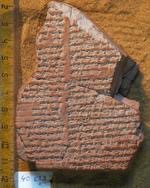
According to some interpretations, the death of the Persian king Darius III Codomannus in July 330 CE was foretold in the Dynastic Prophecy written on a clay tablet found at Babylon.
Heralding the end of the Achaemenid empire, the Macedonian conquerer Alexander the Great took over.
The tablets containing the Dynastic Prophecy are now in the British Museum, BM40623.
(See, e.g., A. Kirk Grayson, Babylonian Historical-Literary Texts, Toronto Semitic Texts and Studies (Toronto: University of Toronto Press, 1975), 19-20, n.29, where he entertains the idea that the Dynastic Prophecy may have had an anti-hellenistic element in it but opposes S. K. Eddy’s idea of widespread anti-Hellenistic sentiment in Seleucid Mesopotamia (in his The King is Dead: Studies in the Near Eastern Resistance to Hellenism 334-31 B.C. [Lincoln: University of Nebraska Press, 1961]) by listing the cuneiform evidence that records Seleucid patronage of traditional Babylonian cultic institutions.
See further Grayson’s Assyrian and Babylonian Chronicles (Locust Valley, NY: J. J. Augustin, 1975; reprinted, Winona Lake: Eisenbrauns, 2000), 278, n.2, where he lists various kinds of evidence of Seleucid temple restorations, among other things.
(Grayson notes here renovations during the reign of Antiochus IV Epiphanes [175-164 BCE], citing M. Rostovtzeff, “Seleucid Babylonia: Bullae and Seals of Clay with Greek Inscriptions,” Yale Classical Studies 3 [1932], 3-113, here 6-7, as evidence; but upon closer inspection of Rostovtzeff one will see that he has in fact dated the Kephalon inscription [now known to be from 201 BCE] to the reign of Antiochus IV.
Adam Falkenstein indicates that the proper reading for the date was established only some time after its initial publication [Topographie von Uruk: I. Teil Uruk zur Seleukidenzeit (Leipzig: Otto Harrassowitz, 1941), 7, n.3].
The relevant lines are quoted below in a translation by Bert van der Spek. [Column 5]
4 For two years [he will exercise kingship]. [1].
5 That king a eunuch [will murder].
6 A certain prince [……] [2]
7 will set out and [seize] the thr[one]
8 Five years [he will exercise] king[ship]
9 Troops of the land of Hani [……] [3]
10 will set out a[nd? .. ]./-ship?\ th[ey will? …]
11 [his] troop[s they will defeat;]
12 booty from him they will take [and his spoils]
13 they will plunder. Later [his] tr[oops …]
14 will assemble and his weapons he will ra[ise (…)]
15 Enlil, Šamaš and [Marduk(?)] [4]
16 will go at the side of his army [(…);]
17 the overthrow of the Hanaean troops he will [bring about].
18 His extensive booty he will car[ry off and]
19 into his palace he [will bring it]
20 The people who had [experienced] misfortune
21 [will enjoy] well-being.
22 The heart of the land [will be happy]
23 Tax exemption [he will grant to Babylonia]
http://www.livius.org/aj-al/alexander/alexander_t49.html
There is, therefore, currently no evidence to the best of my knowledge for renovation of Mesopotamian temples under Antiochus IV.)
Note also S. M. Sherwin-White, “Babylonian Chronicle Fragments as a Source for Seleucid History,” Journal of Near Eastern Studies 42 (1983), 265-70 and her analysis in “Ritual for a Seleucid King at Babylon?” Journal of Hellenic Studies 103 (1983), 156-59, citing Grayson’s earlier work (159, nn.40-41).
The Cylinder of Antiochus I Soter from the Ezida Temple in Borsippa (Antiochus Cylinder) is an historiographical text from ancient Babylonia.
It describes how the Seleucid crown prince Antiochus, the son of king Seleucus Nicator, rebuilt the Ezida Temple.
The cuneiform text itself (BM 36277) is now in the British Museum. The document is a barrel-shaped clay cylinder, which was buried in the foundations of the Ezida temple in Borsippa.
The script of this cylinder is inscribed in archaic ceremonial Babylonian cuneiform script that was also used in the well-known Codex of Hammurabi and adopted in a number of royal inscriptions of Neo-Babylonian kings, including Nabopolassar, Nebuchadnezzar and Nabonidus (cf. Berger 1973).
The script is quite different from the cuneiform script that was used for chronicles, diaries, rituals, scientific and administrative texts.
Another late example is the Cyrus Cylinder, commemorating Cyrus’ capture of Babylon in 539 BCE (Schaudig 2001: 550-6). This cylinder, however, was written in normal Neo-Babylonian script.
The Antiochus Cylinder was found by Hormuzd Rassam in 1880 in Ezida, the temple of the god Nabu in Borsippa, in what must have been its original position, “encased in some kiln-burnt bricks covered over with bitumen” in the “doorway” of Koldewey’s Room A1: probably this was built into the eastern section of the wall between A1 and Court A, since the men of Daud Thoma, the chief foreman, seem to have destroyed much of the brickwork at this point.
Rassam (1897: 270) mistakenly records this as a cylinder of Nebuchadnezzar II (Reade 1986: 109). The cylinder is now in the British Museum in London. (BM 36277).
http://www.livius.org/cg-cm/chronicles/antiochus_cylinder/antiochus_cylinder1.html
Amélie Kuhrt and Susan Sherwin-White, “Aspects of Seleucid Royal Ideology: The Cylinder of Antiochus I from Borsippa,” Journal of Hellenic Studies 111 (1991), 81-2 survey the data (chronicles and diaries) for Seleucid work on Marduk’s temple in Babylon, dating between 322/1 to 224/3 and Kuhrt, “The Seleucid Kings and Babylonia,” 48 cites an astrological diary that proves Antiochus III engaged in cultic rites as late as 187 BCE.
For the diaries specifically, see, e.g., R. J. van der Spek, “The Astronomical Diaries as a Source for Achaemenid and Seleucid History,” Bibliotheca Orientalis 50 (1993), 91-101 and Wayne Horowitz, “Antiochus I, Esagil, and a Celebration of the Ritual for Renovation of Temples,” Revue d’assyriologie et d’archéologie orientale 85 (1991), 75-77.
Archaeology often confirms reports of temple renovation and perhaps equally significantly has yet to provide evidence for the Hellenization of temple architecture. In fact, quite the opposite case holds true: Seleucid rulers seem to have encouraged the continued use of traditional temple styles when renovation projects were undertaken.
(See Lise Hannestad and Daniel Potts, “Temple Architecture in the Seleucid Kingdom,” in Religion and Religious Practice in the Seleucid Kingdom, ed. Per Bilde et al.; Studies in Hellenistic Civilization 1 (Aarhus: Aarhus University Press, 1990), 107, who cite the Bīt Rēš temple’s (Temple of Anu) traditional design as evidence (a temple refurbished at least a couple of times during the Seleucid period).
They conclude with the following: “we can hardly escape the conclusion that there was no official programme of Hellenization of the religious sphere during Seleucid rule. The evidence from Babylonia points rather to the contrary, that the Seleucid kings, like many later colonizers, encouraged traditionalism in the religious sphere” (123).
See also Susan B. Downey, Mesopotamian Religious Architecture (Princeton: Princeton University Press, 1988), 7-50, especially 11, 14, 16, and 38 (all concerning temples in either Babylon or Uruk).
Alan Lenzi, The Uruk List of Kings and Sages and Late Mesopotamian Scholarship, JANER 8.2, Brill, Leiden, 2008. pp. 153-5.
Lenzi: On the Restoration of the Temples
“There is also some evidence that the Seleucids, at least at times, accommodated themselves to Mesopotamian traditions. Perhaps the most famous example of this is Antiochus I’s royal inscription of 268 BCE.
In this archaizing inscription Antiochus I appropriated the traditional language of kingship, utilized throughout earlier Mesopotamian royal inscriptions, in order to present his own rule in the linguistic garb of an indigenous king.
The Cylinder of Antiochus I Soter from the Ezida Temple in Borsippa (Antiochus Cylinder) is an historiographical text from ancient Babylonia.
It describes how the Seleucid crown prince Antiochus, the son of king Seleucus Nicator, rebuilt the Ezida Temple.
The cuneiform text itself (BM 36277) is now in the British Museum. The document is a barrel-shaped clay cylinder, which was buried in the foundations of the Ezida temple in Borsippa.
The script of this cylinder is inscribed in archaic ceremonial Babylonian cuneiform script that was also used in the well-known Codex of Hammurabi and adopted in a number of royal inscriptions of Neo-Babylonian kings, including. Nabopolassar, Nebuchadnezzar and Nabonidus (cf. Berger 1973).
The script is quite different from the cuneiform script that was used for chronicles, diaries, rituals, scientific and administrative texts.
Another late example is the Cyrus Cylinder, commemorating Cyrus’ capture of Babylon in 539 BCE (Schaudig 2001: 550-6). This cylinder, however, was written in normal Neo-Babylonian script.
The Antiochus Cylinder was found by Hormuzd Rassam in 1880 in Ezida, the temple of the god Nabu in Borsippa, in what must have been its original position, “encased in some kiln-burnt bricks covered over with bitumen” in the “doorway” of Koldewey’s Room A1: probably this was built into the eastern section of the wall between A1 and Court A, since the men of Daud Thoma, the chief foreman, seem to have destroyed much of the brickwork at this point.
Rassam (1897: 270) mistakenly records this as a cylinder of Nebuchadnezzar II (Reade 1986: 109). The cylinder is now in the British Museum in London. (BM 36277).
http://www.livius.org/cg-cm/chronicles/antiochus_cylinder/antiochus_cylinder1.html
The opening lines read: “I am Antiochus, great king, strong king, king of the inhabited world, king of Babylon, king of the lands, the provider of Esagil and Ezida, foremost son of Seleucus, the king, the Macedonian, king of Babylon.”
Even if we were to interpret all of these Seleucid activities as exploiting indigenous traditions to further their own rule, we should probably only conclude from this that the Seleucids were doing what a long line of earlier Mesopotamian rulers—indigenous or otherwise—had done.
But, we need not imagine the Seleucid appropriation or support of Mesopotamian institutions as a simple one-way, top-down mechanism of exploitation. There may be indications that some of the local elites encouraged the rulers to adopt Mesopotamian ways, either explicitly or implicitly.
For example, several historians have suggested that Berossus’ Babylonaica was explicitly written to encourage the foreign Seleucids, especially Antiochus I, to sympathize with and support Mesopotamian traditions.
The Scheil dynastic tablet or “Kish Tablet” is an ancient Mesopotamian cuneiform text containing a variant form of the Sumerian King List.
The Assyriologist Jean-Vincent Scheil purchased the Kish Tablet from a private collection in France in 1911. The tablet is dated to the early 2d millennium BCE.
https://en.wikipedia.org/wiki/Scheil_dynastic_tablet
(See Stanley Mayer Burstein, The Babyloniaca of Berossus (Sources from the Ancient Near East I/5; Malibu: Undena Publications, 1978), 5-6, who believes Berossus’ departure for Cos late in his life may indicate Berossus’ disappointment with the Seleucid policies toward Babylon.
See also Paul-Alain Beaulieu, “The Historical Background of the Uruk Prophecy,” in The Tablet and the Scroll: Near Eastern Studies in Honor of William W. Hallo, ed. M. Cohen, D. Snell and D. Weisberg (Bethesda: CDL Press, 1993), 49.
But see Amélie Kuhrt, “Berossus’ Babylonaika and Seleucid Rule in Babylonia,” in Hellenism in the East, 32-56, who contends Berossus may have written in order to provide the Seleucids with local ideological support for their regime, especially in order for them to rebut claims made by Ptolemaic authors such as Manetho and Hecataeus (55-56)).
And recently Paul-Alain Beaulieu has set the Uruk Prophecy within a larger religious agenda and interpreted the enigmatic text as an implicit attempt to persuade Antiochus I to support the Uruk temple, thereby furthering the newly revived cult of Anu and Antu.
(He writes, “The Uruk Prophecy is therefore a rewriting of historical material with the purpose of vindicating the establishment (presented as the reestablishment) of a new cult (i.e. the cult of Anu as reorganized in the third century by the priesthood of the Bīt Rēs), to present the ruler who will foster this cultic revival (i.e. one of the contemporary Seleucid rulers [which Beaulieu later identifies as Antiochus I]) as a new Nebuchadnezzar, to obliquely suggest that his father was a neglectful, and therefore malevolent, ruler (as Nabopolassar had been), and to predict an everlasting rule for his dynasty, even a rule of divine character” (Beaulieu, “Uruk Prophecy,” 49).”
Alan Lenzi, The Uruk List of Kings and Sages and Late Mesopotamian Scholarship, JANER 8.2, Brill, Leiden, 2008. pp. 155-7.
Lenzi: On Nikarchos and Kephalon
"While properly recognizing Seleucid adoption or support of Babylonian traditions and institutions, we should not allow the pendulum to swing too far toward a thorough-going pro-Babylonian policy.
As noted by Sherwin-White, "there is . . . a tendency in writing on the Seleucids, and on the hellenistic world in general, to concertina three whole centuries of history and assume . . . that what is characteristic of one century, or of part of it, is equally true of the whole."
Clay jar lid, incised with a Greek inscription; diameter 0.165, maximum thickness 0.015. Letters 0.005 – 0.01.
Now in the Yale Babylonian Collection (MLC 2632).
Courtesy of the Yale Babylonian Collection.
S.M. Sherwin-White, Zeitschrift fur Papyrologie und Epigraphik, Bd. 50 (1983), p. 221.
Thus, we should not assume that temple renovations started under Alexander or a ruler fashioning himself according to the pattern of a good Mesopotamian king in the mid-third century was the Seleucid policy, that it always characterized the Seleucid policy for the duration of the empire in every location under their governance.
Two well-known dedicatory inscriptions from the second half of the third century (i.e., 244 BCE, during the reign of Seleucus II, and 201 BCE, during the reign of AntiochusIII) that describe temple renovations on Uruk's Bīt Rēš temple might in fact hint at a cooling of Seleucid interests in Mesopotamia, at least outside the city of Babylon.
(Editions of the two texts may be found in Falkenstein, Topographie von Uruk, 4-7. For the Kephalon inscription, see the improved readings offered by van Dijk, "Die Inschriftenfunde," 47 (though he accidentally attributes the inscription to Nikarchosinstead of Kephalon).
For Seleucid interaction with Mesopotamian cults, see note 64.)
Although both inscriptions describe the temple renovation as having been undertaken "for the life of the king" (ana bulta ša RN) and probably therefore suggest the indirect involvement of the Seleucid rulers, the actual administrators of the work according to these texts were city/temple officials, the famous Anu- uballit–Nikarchos and Anu-uballit–Kephalon.
From:
S. M. Sherwin-White
Aristeas Ardibelteios: Some Aspects of the Use of Double Names in Seleucid Babylonia
Zeitschrift für Papyrologie und Epigraphik
Bd. 50 (1983), pp. 209-221
http://www.jstor.org/stable/20183777?&seq=14#page_scan_tab_contents
(For these two men, their titles (šaknu and rab ša rēš āli ša Uruk), hierarchical relationship, families, and attestation elsewhere in Seleucid cuneiform documents, see L. Timothy Doty, "Nikarchos and Kephalon," in A Scientific Humanist: Studies in Memory of Abraham Sachs, ed. Erle Leichty et al.; Occasional Publications of the Samuel Noah Kramer Fund 9 (Philadelphia: University Museum, 1988), 95-118.
Kephalon's title has since been connected to temple rather than civic duties (see T. Boiy, "Akkadian-Greek Double Names in Hellenistic Babylonia," in Ethnicity in Ancient Mesopotamia: Papers Read at the 48th Rencontre Assyriologique Internationale Leiden, 1-4 July 2002, ed. W. H. van Soldt [Leiden: Nederlands Instituut Voor Het Nabije Oosten, 2005], 57 n. 47, citing studies by van der Spek and Joannès).
Anu-uballit–Kephalon is also known from an Aramaic inscription found on 15 bricks in the Irigal temple in Seleucid Uruk (see R. A. Bowman, "Anu-uballit–Kefalon," American Journal of Semitic Languages and Literatures 56.3 [1939], 231-43 and Falkenstein, Topographie von Uruk, 31); he was apparently responsible for some restoration work in that building, too.
It is significant to note that Anu-uballit–Nikarchos received his name, according to the inscription, directly from the Seleucid king (šá 1an-ti-'-i-ku-su LUGAL KUR.KUR.MEŠ 1 ni-qí-qa-ar-qu-su MU-šú šá-nu-ú íš-kun-nu, "whom Antiochus, the king of the lands, named Nikarchos as his other name").
Also, one should at least consider the possibility of a relationship between the meanings of the men's Greek names (Νίκαρχος and Κέφαλων) and the positions of authority these inscriptions give to the men.
Even if these inscriptions point to indirect Seleucid involvement or support, they also suggest that the kind of personal interest in Mesopotamian temple construction apparently exhibited by Antiochus I had waned somewhat among his successors, an opinion affirmed by Beaulieu in his interpretation of the Uruk Prophecy and its historical context."
Alan Lenzi, The Uruk List of Kings and Sages and Late Mesopotamian Scholarship, JANER 8.2, Brill, Leiden, 2008. pp. 157-8.
Lenzi: The Exaltation of the god Anu
“This brings us to the last element of historical context: antiquarianism at Uruk. Certainly others have noticed the conspicuous rise of the Anu and Antu cult in Hellenistic Uruk in both the archaeological evidence of the massive Bīt Rēs temple dedicated to Anu and Hellenistic cuneiform texts.
(For the former, see, for example, Downey, Mesopotamian Religious Architecture, 17-32, who identifies the Bīt Rēs as “the most important religious structure in Uruk during the Seleucid period” (17), and for the latter, see Amélie Kuhrt, “Survey of Written Sources Available for the History of Babylonia under the Later Achaemenids,” in Achaemenid History I: Sources, Structures and Synthesis, ed. Heleen Sancisi-Weerdenburg (Leiden: Brill, 1987), 147-57, here 151.)
A stele of the Assyrian king Šamši-Adad V (c.815 BCE), standing in the gesture of blessing before five divine emblems:
(1) the crown of the sky-god Anu, with three horns;
(2) the winged disk, often associated with Marduk or Aššur;
(3) the disk and crescent associated with the Moon god Sin;
(4) the fork associated with Nabu (?);
(5) the eight-pointed star of Ishtar.
It is now apparent that the horned crown of Anu is portrayed on numerous depictions of ummanū, or human apkallū.
The cross worn as an amulet is a symbol of the sun god, Šamaš.
It is worth noting that this king is portrayed without any indicators of divinity like a horned headdress, though he does hold a mace in his left hand, and the rosette design is evident on his bracelet.
BM 118892, photo (c) The British Museum.
But Beaulieu has offered a compelling explanation of this cultic development along with its attendant theological distinctives. He argues that it is a deliberate, archaizing theological program under the direction of temple functionaries, probably beginning in the late Persian period and culminating in Hellenistic times.
(See Paul-Alain Beaulieu, “Antiquarian Theology in Seleucid Uruk,” Acta Sumerologica 14 (1992), 47-75. (Beaulieu also focuses on antiquarianism in his “Antiquarianism and the Concern for the Past in the Neo-Babylonian Period,” Bulletin of the Canadian Society for Mesopotamian Studies 28 [1994], 37-42).
Beaulieu dates the rise of the prominence of Anu and Antu by the appearance of these deities in personal names. Summarizing his findings, he writes: “the crucial phase of the process had probably already taken place by the end of the fifth century” (“Antiquarian Theology,” 55).)
A key element in this program was the fashioning of the Urukean pantheon after the canonical god list An = Anum, thereby exalting Anu and Antu, ancient patron gods of Uruk, to its head while demoting other high-ranking deities like Marduk, the old imperial capital’s head deity, and Ishtar, a goddess prominent at Uruk in earlier periods, to a lower level in the pantheon.
Ruins and Plan of the Anu Ziggurat and the White Temple. Uruk ( Present-day Warka, Iraq). c. 3300-3000 BCE.
https://www.pinterest.com/pin/168814686005734256/
(Beaulieu cites SpBTU I 126 as evidence that the old god-list was known in Seleucid Uruk (“Antiquarian Theology,” 73, n.40). He discusses other related archaizing items, too, such as bringing an obscure goddess like Amasagnudi, consort of Papsukkal/Ninsubur, the vizier of Anu, to cultic prominence.)
Beaulieu describes the reasons for this theological move as follows:
“By putting Anu back in the foreground the religious establishment of Uruk achieved a double purpose. They created a theological system which could challenge the dominant Marduk–Nabû theology of Babylon, and they promoted an Urukaean deity to the head of their new version of the national pantheon, thus enhancing local pride.”
(“Antiquarian Theology,” 68. Since greater antiquity was perceived as conferring greater authority in Mesopotamia, one might add that Uruk had a distinct advantage in reasserting the claims of the Anu cult against the claims of the Babylonian Marduk cult: Anu was considered older than him even by such traditions as the Enūma Eliš.
However, even if one wishes to see the exaltation of Anu in terms of reasserting the authority and position of a local deity within the pantheon, this does not exclude the possibility that other concerns contributed to the decision to do so.
The decision to exalt Anu, e.g., may also have been influenced by the increasing importance of astrology among scholars, who at this later period of Mesopotamian history were now primarily associated with temples.)
In other words, with the disintegration of indigenous imperial structures under foreign regimes with little interest in arcane Mesopotamian theological matters, local cults were able to reassert their own distinctive interests. The local temple elites in Uruk did this by utilizing ancient (conceived as such by mid-first millennium times) god-list traditions to exalt Anu to the head of the pantheon.”
Alan Lenzi, The Uruk List of Kings and Sages and Late Mesopotamian Scholarship, JANER 8.2, Brill, Leiden, 2008. pp. 158-60.
Lenzi: More on the Exaltation of the Anu Cult
"Beaulieu believes this development also provides an explanation for the great number of scholarly texts that have turned up in Seleucid-level excavations at Uruk, both traditional kinds known from elsewhere as well as those with an explicitly Urukean bias.
(See François Thureau-Dangin, Tablettes d'Uruk à l'usage des Prêtres du Temple d'Anu au Temps des Séleucides, Textes Cunéiformes du Louvre 6 (Paris: Librairie Orientaliste Paul Geuthner, 1922) (= TCL 6); SpBTU 1-5, BaMB 2, etc. The Uruk Prophecy is an example of a distinctively Urukean text.)
In fact, as Beaulieu explains, one colophon, attached to TCL 6 38, seems to offer justification for the new rituals of the Anu cult via the familiar "pious fraud" trick: Kidin-Anu "found" some ritual tablets in Elam, where the sinister Nabopolassar had taken them much earlier. He copied them there in order to return to Uruk and properly restore the Anu cult.
(See Beaulieu, "Uruk Prophecy," 47 for the analysis. The text may be found in Thureau-Dangin, Rituels Accadiens, 79-80, 85-86 and Hunger, Babylonische und assyrische Kolophone, #107.)
The archaizing tendency was also deployed in Kephalon's temple dedicatory inscription from 201 BCE mentioned above. (Also mentioned by Beaulieu in connection with antiquarianism (see "Antiquarian Theology," 68).
Although not so much as hinted at in the earlier Nikarchos inscription of 244 BCE, the later inscription names Adapa himself, the first of the antediluvian apkallū, as the founder of the Bīt Rēs temple. (See Falkenstein, Topographie, 6 and van Dijk, "Die Inschriftenfunde," 47 (improving Falkenstein) for the text.)
With this and the other two contextual points in mind, we may now attempt to answer the questions I posed at the beginning of this study.
The ULKS clearly draws upon earlier ideas to formulate its list. What I have emphasized in the foregoing is that its formulation of the list, although unique, is better viewed not as a new invention from old material, but as a very systematic and explicit formulation of an old association, one that is evidenced already in early first millennium materials.
Given the deliberate and learned antiquarian interests identified in texts by Beaulieu, it seems quite reasonable to include the ULKS in that intellectual current, too.
Thus, just as the scholars responsible for moving Anu to the head of the pantheon utilized the Kassite period An = Anum god-list for that purpose, so too they used earlier traditions about apkallū–ummânū relations to further their religious authority and other aspects of their agenda, especially their standing vis-à-vis political leadership.
A scrutiny of the precise manner in which the scribes behind the ULKS formulated their genealogy reveals the cultic and especially political aspects of their aspirations.
An aerial view of the Uruk ziggurat. My purpose in posting pics of the temple remains in Ur and Uruk is to compare their relative sizes and comparative majesty.
As for the cultic aspect of the agenda, it is surely significant that Nungalpirigal, the first postdiluvian apkallū, makes a bronze lyre that finds its final resting place in front of Anu. This creates a connection between our text and the renewal of the cult of Anu as discussed by Beaulieu.
But there is more to matters than this simple fact. By placing this cultic act of devotion first in the list, right after the flood, the ULKS intends to give the Anu cult prominence; the first human sage was a devotee of Anu.
Moreover, the list probably supplies an etiology for the relationship between Nungalpirigal, the Eana temple, and Anu, thus answering any would be critics of the novel idea that Anu's house could displace Eana."
Alan Lenzi, The Uruk List of Kings and Sages and Late Mesopotamian Scholarship, JANER 8.2, Brill, Leiden, 2008. pp. 160-1.
Lenzi: Authority Rooted in Divinity
“As for the political aspect of the agenda, there are at least three points that require attention. First, we know that the locus of scholarship had shifted from court to temple, thereby removing (as far as we can tell) scholars from regular influence within the centers of political power.
(See, e.g., Francesca Rochberg, “The Cultural Locus of Astronomy in Late Babylonia,” in Die Rolle der Astronomie in den Kulturen Mesopotamiens: Beiträge zum 3 Grazer Morgenländischen Symposium (23-27 September 1991), ed. Hannes D. Galter, Grazer Morgenländische Studien 3 (Graz: Graz, 1993), 31-45, here 44.)
Invoking the association of scholarship with memorable kings and their mythical sages or famous human scholars in the ULKS attributes to the Seleucid-era scholarly professions a venerable history, which in turn implies the scholars deserved a higher level of political influence or support than in fact they were enjoying at the time (see also the discussion of line 21 below).
Second, by emphasizing their historical connection to the antediluvian sages—the agents of Ea—the scholars were granting themselves authority rooted in divinity, a particularly difficult kind of authority to dispute.
Less systematic formulations of this genealogical idea in earlier materials provide us with the evidence to see that these Seleucid-era scribes were not inventing something new. Rather, their systematic and explicit formulation demonstrates their concern to make their position well-understood.
Map of the Main Cities of Sumer and Elam
Based on Wikipedia content that has been reviewed, edited, and republished. Original image by Phirosiberia. Uploaded by Jan van der Crabben, published on 26 April 2012 under the following license:
Creative Commons: Attribution-ShareAlike.
This license lets others remix, tweak, and build upon your work even for commercial reasons, as long as they credit you and license their new creations under the identical terms.
http://www.ancient.eu/uploads/images/359.png?v=1431034297
No longer wandering the halls of the palace at a time when scholarship’s importance went without saying, these men could assume nothing was self-evident. The fact that Berossus includes something of the same idea in his work, which was probably written during the reign of Antiochus I, points to this conclusion as well.
The scholars, it seems, were deploying a mythmaking strategy to elevate their position and importance in society, even if achieving imperial-level influence was not their ultimate goal.
Third and finally, the genealogy suggests a position of both antiquity and prominence and thus implicitly authority to Sin-leqi-unnini, the first human ummânū in the list and ancestor of the scribe who copied the present tablet.
I doubt that it is a coincidence that this same figure is the eponymous ancestor of the scribe writing the tablet.
(For a discussion of scribal ancestors and their four clans in Uruk, see Lambert, “Ancestors, Authors, and Canonicity” and “Ancestors, Authors, and Canonicity (JCS XI, 1-14): Additions and Corrections.”)
In its present form, therefore, alongside the more general points of exalting the cult of Anu and attributing importance to scholars, we note for the sake of completeness that this list is clearly biased toward the Sin-leqi-unnini scribal clan.
(See likewise van Dijk, “Inschriftenfunde,” 50. It would not be surprising to someday find a list contemporary with the ULKS that places a rival ancestor/clan, Ekur-zakir, for example, in a similarly prominent position.
From Ronald Wallenfels, Apkallu-Sealings from Hellenistic Uruk, 1993.
Seal number 3. A fish-apkallu, a paradu-fish apkallu, depicted on a personal seal.
https://www.academia.edu/1368825/Apkallu-Sealings_from_Hellenistic_Uruk
It is interesting that a number of members of the Ekur-zakir clan actually owned apkallū-seals. So it is clear that the apkallū tradition was utilized by other scribal clans. See Ronald Wallenfels, “Apkallu-Sealings from Hellenistic Uruk,” Baghdader Mitteilungen 24 (1993), 309-24 and Tafeln 120-23.)
But are the scholars who created and copied this list really trying to manipulate the Seleucid court? Are they trying to insinuate that the traditional association of kings and scholars should continue under a non-native king?
From Ronald Wallenfels, Apkallu-Sealings from Hellenistic Uruk, 1993.
Seal number 23. A fish-apkallu, a paradu-fish apkallu, depicted on a personal seal.
https://www.academia.edu/1368825/Apkallu-Sealings_from_Hellenistic_Uruk
Although this is possible, it is difficult to imagine how the scribes would ever have acquired an audience for their ideas. Moreover, the identification of the person in the last line of the text before the colophon indicates a negative answer to these questions and suggests a more subtle tactic from the scholars.
As is often the case, the culmination of an Akkadian list occurs in its final line where matters are summarized or its telos obtained. Thus, as van Dijk already recognized, the contemporary purpose of the ULKS probably rests precisely here.
(“Inschriftenfunde,” 45-46, 52. Concerning the reading of the last line, see also van Dijk’s later comments in his brief note “Die Tontafelfunde der Kampagne 1959/60,” Archiv für Orientforschung 20 (1963), 217.)
Unfortunately, the last line of our text is extremely frustrating. Unlike previous lines naming kings and scholars, all we have in this line is a break hiding one or two signs, a broken IŠ sign, and a name.
No one has yet been able to provide an acceptable restoration for the beginning of the line. The following interpretation, therefore, must remain tentative.”
Alan Lenzi, The Uruk List of Kings and Sages and Late Mesopotamian Scholarship, JANER 8.2, Brill, Leiden, 2008. pp. 161-3.
Lenzi: The Uruk List of Kings and Sages Renewed the Anu Cult
“Whatever the first word may be, I think van Dijk was correct to suggest that the name of the final person in the list, a certain Ini-qa-qu-ru-sù-ú, is none other than the Nikarchos (Νίκαρχος) known from the dedicatory inscription found in the Bīt Rēs temple dating back to 244 BCE.
Although some have questioned this proposed identification due to the orthography of the name on the tablet, variations in Greek names are rather common.
Indeed, a list of orthographic variations attested for Nikarchos in archival texts, provided to me by L. T. Doty, suggests his name was something of a moving target for the scribes. Thus, the identification seems quite plausible. This in turn opens line 21 to an interesting line of interpretation.
I suggest that Nikarchos, the šaknu of Uruk in the mid-3rd Century, occupies in line 21 the position of the tenth and final “king” of the ULKS.
(Nikarchos is clearly not listed as a king; notice the absence of LUGAL after his name. My interpretation suggests the placement in the text was a symbolic gesture. Although Nikarchos was a member of the Ahu’tu clan, his work on the temple would have benefited all of the scribal clans.
Ruins of the Anu Ziggurat and the White Temple. Uruk ( Present-day Warka, Iraq). c. 3300-3000 BCE.
https://www.pinterest.com/pin/168814686005734256/
It is therefore not surprising to see a text with a Sin-leqi-unnini bias honor him as the ULKS does. Van Dijk accepted the identification of the name with Nikarchos tentatively; but, having confused Nikarchos for Kephalon in the dedicatory inscription of 201 BCE mentioned above, he wanted to make Nikarchos the last of a long line of sage/scholars that stretched back to Adapa. Apart from the confusion, I do not think the list supports this idea.)
Associating him with ancient kings of renown and doing so by listing him in the tenth (a number of completion) and final (a place of prominence) position in the list exalts him well-beyond what one would expect from his actual civic title.
As is well-known, temple building was a royal prerogative in ancient Mesopotamia and Nikarchos had shown leadership in the re-building of the Anu temple as indicated in the dedicatory inscription of 244 BCE. The presentation here therefore is probably intended to praise and flatter Nikarchos in light of his king-like actions.
Yet there is something amiss in our line; it is uneven and unprecedented. For unlike the kings listed in the lines before Nikarchos, no scholar’s name follows his on the tablet. There is no successor to the famed Ahiqar.
Instead, there is a gap on the tablet to the end of the line. Conspicuous in its contrast to the repetitive lines that precede, the text infers with this absence that the office of scholar was unoccupied during Nikarchos’ time.
(If there had been a scholar named with Nikarchos, he would have been the eleventh post-diluvian scholar on the list since there are two scholars, Gimil-Gula and Taqiš-Gula, mentioned with king Abi-ešuh in line 15.
But as there are only nine post-diluvian kings in the list, Nikarchos’s scholar would be the scholar for the tenth reign. Excluding the invocation attached to the end of the tablet (line 25), the gap at the end of line 21 is the only one on the entire tablet.)
Given the norm established by the previous lines in the text, this should be viewed as an unacceptable situation for the scholars in Uruk. Contemporary scholars, the list implies, were not being properly recognized; they were not receiving their ancient due.
How could scholars respond to this situation? They did what they knew to do: they wrote a text—our text—to assert emphatically their ancient role as inheritors and perpetuators of antediluvian knowledge, to lay claim unmistakably to divine authorization of their status, and to reiterate in strong terms the importance and supremacy of their cult.
Ending as it does with Nikarchos, the text flatters the man to which they could appeal while also reminding him of the current deficiency. The scholars knew that Nikarchos was not really a king. Further, they of all people would be aware of the fact that they were not going to be imperial advisors like their predecessors to him or to the non-indigenous Seleucid kings.
But the text’s ending praises their patron for his past activity in order to induce him to take up their cause and give them the attention their ancient pedigree deserved. If imperial interests in Uruk were on the wane, Nikarchos may have been their only and best hope to further their interests.
The ULKS presents a new formulation of an old scribal genealogical idea, composed under foreign rule that showed uneven interest in things Mesopotamian, during a scribal renaissance in Uruk of archaic indigenous lore.
From these historical contextual clues it is reasonable and plausible to suggest that the Uruk List of Kings and Sages is a tendentious document written by scholars who felt the need to reassert their importance to the community leadership in order to advance their cause, the renewal of the Anu cult.
Recognizing the tentativeness of the evidence, this interpretation remains only a possibility for the time being.”
Alan Lenzi, The Uruk List of Kings and Sages and Late Mesopotamian Scholarship, JANER 8.2, Brill, Leiden, 2008. pp. 163-5.
![]()
![]()
Disclaimer:
Some material presented will contain links, quotes, ideologies, etc., the contents of which should be understood to first, in their whole, reflect the views or opinions of their editors, and second, are used in my personal research as "fair use" sources only, and not espousement one way or the other. Researching for 'truth' leads one all over the place...a piece here, a piece there. As a researcher, I hunt, gather and disassemble resources, trying to put all the pieces into a coherent and logical whole. I encourage you to do the same. And please remember, these pages are only my effort to collect all the pieces I can find and see if they properly fit into the 'reality aggregate'.
Personal Position:
I've come to realize that 'truth' boils down to what we 'believe' the facts we've gathered point to. We only 'know' what we've 'experienced' firsthand. Everything else - what we read, what we watch, what we hear - is what someone else's gathered facts point to and 'they' 'believe' is 'truth', so that 'truth' seems to change in direct proportion to newly gathered facts divided by applied plausibility. Though I believe there is 'truth', until someone representing the celestial realm visibly appears and presents the heavenly records of Facts And Lies In The Order They Happened, I can't know for sure exactly what "the whole truth' on any given subject is, and what applies to me applies to everyone. Until then I'll continue to ask, "what does The Urantia Book say on the subject?"
~Gail Bird Allen
![]()
![]()














-
Urantia Book, 44:0.11 - The Celestial Artisans
Never in your long ascendancy will you lose the power to recognize your associates of former existences. Always, as you ascend inward in the scale of life, will you retain the ability to recognize and fraternize with the fellow beings of your previous and lower levels of experience. Each new translation or resurrection will add one more group of spirit beings to your vision range without in the least depriving you of the ability to recognize your friends and fellows of former estates.
-
Princess Bride 1987 Wallace Shawn (Vizzini) and Mandy Patinkin (Inigo Montoya)
Vizzini: HE DIDN'T FALL? INCONCEIVABLE.
Inigo Montoya: You keep using that word. I do not think it means what you think it means. -
Urantia Book, 117:4.14 - The Finite God
And here is mystery: The more closely man approaches God through love, the greater the reality -- actuality -- of that man. The more man withdraws from God, the more nearly he approaches nonreality -- cessation of existence. When man consecrates his will to the doing of the Father's will, when man gives God all that he has, then does God make that man more than he is.
-
Urantia Book, 167:7.4 - The Talk About Angels
"And do you not remember that I said to you once before that, if you had your spiritual eyes anointed, you would then see the heavens opened and behold the angels of God ascending and descending? It is by the ministry of the angels that one world may be kept in touch with other worlds, for have I not repeatedly told you that I have other sheep not of this fold?"
-
Urantia Book, Foreword - 0:12.12 - The Trinities
But we know that there dwells within the human mind a fragment of God, and that there sojourns with the human soul the Spirit of Truth; and we further know that these spirit forces conspire to enable material man to grasp the reality of spiritual values and to comprehend the philosophy of universe meanings. But even more certainly we know that these spirits of the Divine Presence are able to assist man in the spiritual appropriation of all truth contributory to the enhancement of the ever-progressing reality of personal religious experience—God-consciousness.
-
Urantia Book, 1:4.3 - The Mystery Of God
When you are through down here, when your course has been run in temporary form on earth, when your trial trip in the flesh is finished, when the dust that composes the mortal tabernacle "returns to the earth whence it came"; then, it is revealed, the indwelling "Spirit shall return to God who gave it." There sojourns within each moral being of this planet a fragment of God, a part and parcel of divinity. It is not yet yours by right of possession, but it is designedly intended to be one with you if you survive the mortal existence.
-
Urantia Book, 1:4.1 - The Mystery Of God
And the greatest of all the unfathomable mysteries of God is the phenomenon of the divine indwelling of mortal minds. The manner in which the Universal Father sojourns with the creatures of time is the most profound of all universe mysteries; the divine presence in the mind of man is the mystery of mysteries.
-
Urantia Book, 1:4.6 - The Mystery Of God
To every spirit being and to every mortal creature in every sphere and on every world of the universe of universes, the Universal Father reveals all of his gracious and divine self that can be discerned or comprehended by such spirit beings and by such mortal creatures. God is no respecter of persons, either spiritual or material. The divine presence which any child of the universe enjoys at any given moment is limited only by the capacity of such a creature to receive and to discern the spirit actualities of the supermaterial world.
-
Urantia Book, 11:0.1 - The Eternal Isle Of Paradise
Paradise is the eternal center of the universe of universes and the abiding place of the Universal Father, the Eternal Son, the Infinite Spirit, and their divine co-ordinates and associates. This central Isle is the most gigantic organized body of cosmic reality in all the master universe. Paradise is a material sphere as well as a spiritual abode. All of the intelligent creation of the Universal Father is domiciled on material abodes; hence must the absolute controlling center also be material, literal. And again it should be reiterated that spirit things and spiritual beings are real.
-
Urantia Book, 50:6.4 - Planetary Culture
Culture presupposes quality of mind; culture cannot be enhanced unless mind is elevated. Superior intellect will seek a noble culture and find some way to attain such a goal. Inferior minds will spurn the highest culture even when presented to them ready-made.
-
Urantia Book, 54:1.6 - True And False Liberty
True liberty is the associate of genuine self-respect; false liberty is the consort of self-admiration. True liberty is the fruit of self-control; false liberty, the assumption of self-assertion. Self-control leads to altruistic service; self-admiration tends towards the exploitation of others for the selfish aggrandizement of such a mistaken individual as is willing to sacrifice righteous attainment for the sake of possessing unjust power over his fellow beings.
-
Urantia Book, 54:1.9 - True And False Liberty
How dare the self-willed creature encroach upon the rights of his fellows in the name of personal liberty when the Supreme Rulers of the universe stand back in merciful respect for these prerogatives of will and potentials of personality! No being, in the exercise of his supposed personal liberty, has a right to deprive any other being of those privileges of existence conferred by the Creators and duly respected by all their loyal associates, subordinates, and subjects.
-
Urantia Book, 54:1.8 - True And False Liberty
There is no error greater than that species of self-deception which leads intelligent beings to crave the exercise of power over other beings for the purpose of depriving these persons of their natural liberties. The golden rule of human fairness cries out against all such fraud, unfairness, selfishness, and unrighteousness.

